What You Should Know About Travel Writing
- An Introduction to Punctuation
- Ph.D., Rhetoric and English, University of Georgia
- M.A., Modern English and American Literature, University of Leicester
- B.A., English, State University of New York
Travel writing is a form of creative nonfiction in which the narrator's encounters with foreign places serve as the dominant subject. Also called travel literature .
"All travel writing—because it is writing—is made in the sense of being constructed, says Peter Hulme, "but travel writing cannot be made up without losing its designation" (quoted by Tim Youngs in The Cambridge Introduction to Travel Writing , 2013).
Notable contemporary travel writers in English include Paul Theroux, Susan Orlean, Bill Bryson , Pico Iyer, Rory MacLean, Mary Morris, Dennison Berwick, Jan Morris, Tony Horwitz, Jeffrey Tayler, and Tom Miller, among countless others.

Examples of Travel Writing
- "By the Railway Side" by Alice Meynell
- Lists and Anaphora in Bill Bryson's "Neither Here Nor There"
- Lists in William Least Heat-Moon's Place Description
- "London From a Distance" by Ford Madox Ford
- "Niagara Falls" by Rupert Brooke
- "Nights in London" by Thomas Burke
- "Of Trave," by Francis Bacon
- "Of Travel" by Owen Felltham
- "Rochester" by Nathaniel Hawthorne
Observations About Travel Writing
Authors, journalists, and others have attempted to describe travel writing, which is more difficult to do than you might think. However, these excerpts explain that travel writing—at a minimum—requires a sense of curiosity, awareness, and fun.
Thomas Swick
- "The best writers in the field [of travel writing] bring to it an indefatigable curiosity, a fierce intelligence that enables them to interpret, and a generous heart that allows them to connect. Without resorting to invention , they make ample use of their imaginations. . . . "The travel book itself has a similar grab bag quality. It incorporates the characters and plot line of a novel, the descriptive power of poetry, the substance of a history lesson, the discursiveness of an essay , and the—often inadvertent—self-revelation of a memoir . It revels in the particular while occasionally illuminating the universal. It colors and shapes and fills in gaps. Because it results from displacement, it is frequently funny. It takes readers for a spin (and shows them, usually, how lucky they are). It humanizes the alien. More often than not it celebrates the unsung. It uncovers truths that are stranger than fiction. It gives eyewitness proof of life’s infinite possibilities." ("Not a Tourist." The Wilson Quarterly , Winter 2010)
Casey Blanton
- "There exists at the center of travel books like [Graham] Greene's Journey Without Maps or [V.S.] Naipaul's An Area of Darkness a mediating consciousness that monitors the journey, judges, thinks, confesses, changes, and even grows. This narrator , so central to what we have come to expect in modern travel writing , is a relatively new ingredient in travel literature, but it is one that irrevocably changed the genre . . . . "Freed from strictly chronological , fact-driven narratives , nearly all contemporary travel writers include their own dreams and memories of childhood as well as chunks of historical data and synopses of other travel books. Self reflexivity and instability, both as theme and style , offer the writer a way to show the effects of his or her own presence in a foreign country and to expose the arbitrariness of truth and the absence of norms." ( Travel Writing: The Self and the World . Routledge, 2002)
Frances Mayes
- "Some travel writers can become serious to the point of lapsing into good ol' American puritanism. . . . What nonsense! I have traveled much in Concord. Good travel writing can be as much about having a good time as about eating grubs and chasing drug lords. . . . [T]ravel is for learning, for fun, for escape, for personal quests, for challenge, for exploration, for opening the imagination to other lives and languages." (Introduction to The Best American Travel Writing 2002 . Houghton, 2002)
Travel Writers on Travel Writing
In the past, travel writing was considered to be nothing more than the detailing of specific routes to various destinations. Today, however, travel writing has become much more. Read on to find out what famous travel writers such as V.S. Naipaul and Paul Theroux say about the profession.
V.S. Naipaul
- "My books have to be called ' travel writing ,' but that can be misleading because in the old days travel writing was essentially done by men describing the routes they were taking. . . . What I do is quite different. I travel on a theme . I travel to make an inquiry. I am not a journalist. I am taking with me the gifts of sympathy, observation, and curiosity that I developed as an imaginative writer. The books I write now, these inquiries, are really constructed narratives." (Interview with Ahmed Rashid, "Death of the Novel." The Observer , Feb. 25, 1996)
Paul Theroux
- - "Most travel narratives—perhaps all of them, the classics anyway—describe the miseries and splendors of going from one remote place to another. The quest, the getting there, the difficulty of the road is the story; the journey, not the arrival, matters, and most of the time the traveler—the traveler’s mood, especially—is the subject of the whole business. I have made a career out of this sort of slogging and self-portraiture, travel writing as diffused autobiography ; and so have many others in the old, laborious look-at-me way that informs travel writing ." (Paul Theroux, "The Soul of the South." Smithsonian Magazine , July-August 2014) - "Most visitors to coastal Maine know it in the summer. In the nature of visitation, people show up in the season. The snow and ice are a bleak memory now on the long warm days of early summer, but it seems to me that to understand a place best, the visitor needs to see figures in a landscape in all seasons. Maine is a joy in the summer. But the soul of Maine is more apparent in the winter. You see that the population is actually quite small, the roads are empty, some of the restaurants are closed, the houses of the summer people are dark, their driveways unplowed. But Maine out of season is unmistakably a great destination: hospitable, good-humored, plenty of elbow room, short days, dark nights of crackling ice crystals. "Winter is a season of recovery and preparation. Boats are repaired, traps fixed, nets mended. “I need the winter to rest my body,” my friend the lobsterman told me, speaking of how he suspended his lobstering in December and did not resume until April. . . ." ("The Wicked Coast." The Atlantic , June 2011)
Susan Orlean
- - "To be honest, I view all stories as journeys. Journeys are the essential text of the human experience—the journey from birth to death, from innocence to wisdom, from ignorance to knowledge, from where we start to where we end. There is almost no piece of important writing—the Bible, the Odyssey , Chaucer, Ulysses —that isn't explicitly or implicitly the story of a journey. Even when I don't actually go anywhere for a particular story, the way I report is to immerse myself in something I usually know very little about, and what I experience is the journey toward a grasp of what I've seen." (Susan Orlean, Introduction to My Kind of Place: Travel Stories from a Woman Who's Been Everywhere . Random House, 2004) - "When I went to Scotland for a friend's wedding last summer, I didn't plan on firing a gun. Getting into a fistfight, maybe; hurling insults about badly dressed bridesmaids, of course; but I didn't expect to shoot or get shot at. The wedding was taking place in a medieval castle in a speck of a village called Biggar. There was not a lot to do in Biggar, but the caretaker of the castle had skeet-shooting gear, and the male guests announced that before the rehearsal dinner they were going to give it a go. The women were advised to knit or shop or something. I don't know if any of us women actually wanted to join them, but we didn't want to be left out, so we insisted on coming along. . . ." (Opening paragraph of "Shooting Party." The New Yorker , September 29, 1999)
Jonathan Raban
- - "As a literary form, travel writing is a notoriously raffish open house where different genres are likely to end up in the bed. It accommodates the private diary , the essay , the short story, the prose poem, the rough note and polished table talk with indiscriminate hospitality. It freely mixes narrative and discursive writing." ( For Love & Money: Writing - Reading - Travelling 1968-1987 . Picador, 1988)
- - "Travel in its purest form requires no certain destination, no fixed itinerary, no advance reservation and no return ticket, for you are trying to launch yourself onto the haphazard drift of things, and put yourself in the way of whatever changes the journey may throw up. It's when you miss the one flight of the week, when the expected friend fails to show, when the pre-booked hotel reveals itself as a collection of steel joists stuck into a ravaged hillside, when a stranger asks you to share the cost of a hired car to a town whose name you've never heard, that you begin to travel in earnest." ("Why Travel?" Driving Home: An American Journey . Pantheon, 2011)
- 100 Major Works of Modern Creative Nonfiction
- What is Nature Writing?
- Defining Nonfiction Writing
- Creative Nonfiction
- First-Person Point of View
- Sports Writing as a Form of Creative Nonfiction
- Tips on Great Writing: Setting the Scene
- Point of View in Grammar and Composition
- An Introduction to Literary Nonfiction
- John McPhee: His Life and Work
- 11 Things You Should Know About Trees
- Definition and Examples of Humorous Essays
- The Life and Travels of Ibn Battuta, World Explorer and Writer
- How to Summarize a Plot
TRY OUR FREE APP
Write your book in Reedsy Studio. Try the beloved writing app for free today.
Craft your masterpiece in Reedsy Studio
Plan, write, edit, and format your book in our free app made for authors.

Blog • Perfecting your Craft
Last updated on Jul 12, 2023
How to Become a Travel Writer in 5 Steps: A Guide for Travel Bugs
For most people, trekking through the mountains or sampling French cuisine is a rare treat. For travel writers, it might just be another day on the job. As their job title suggests, travel writers create content about anything and everything related to exploring the world.
Whether they’re writing to help readers plan a trip or to transport them — through words — to places they may never visit, no two travel writers share the same journey through their careers. But if you intend to walk down this road and become a travel writer, here are five steps to help you on your professional adventure.
Learn to be a descriptive writer and a thorough researcher
If there’s a single skill-set that almost all great travel writers share, it would be in research and descriptive writing. While people in this profession often have degrees in English or journalism, this is not a strict requirement. People come to travel writing from all walks of life, and publications tend to be concerned with your ability to deliver a great piece over any advanced degree.
Although there isn’t any specific travel writing degree, if you want to learn all you can in one centralized place, there are many travel writing courses that train everyone from experienced journalists to new writers.
Immerse readers with your descriptive writing

Readers want you to take them on a journey with you. If you can’t pay for them to join you on a sea voyage to the Azores, you’ll have to settle for evoking the five senses and other descriptive writing techniques.
Take for example, Paul Theroux. A prolific travel writer with a career spanning five decades, he’s treasured for his ability to pull readers into his adventures with simple yet evocative language, as he does in his essay, “ Taking the Great American Roadtrip ”:
What made Barstow's billboards a peculiar blight was the contrast with everything that lay around them—the landscape that was so stark and dramatic as a brooding expanse of withered shrubs and fat cactuses, the stony roads that seemed to lead nowhere, the bleak and beautiful backdrop that seemed as though no one had laid a hand on it, with lively colorations at a distance and up close so dry, like a valley of bones looking as though they could not support life. I had seen deserts in Patagonia and Turkmenistan, northern Kenya and Xinjiang in western China; but I had never seen anything like this. The revelation of the Mojave Desert was (peering past the billboards) not just its illusion of emptiness but its assertive power of exclusion, the low bald hills and far-off mountains looking toasted and forbidding under the darkening sky.
Theroux invites the reader on the road with him and describes the desert landscape in crisp detail. The use of simile (“like a valley of bones”) and strong language (“stark, dramatic”) brings the piece to life and gives us a view from Theroux’s window so it feels like we’re traveling along with him.
How do you remember and keep track of all these details while you’re on the go? Keeping a journal while you’re traveling — even if it’s just to another part of the town you live in — is a great method to have all the information you need to write your story when you finally get to sit down and reflect on your journey.
Cherry-pick the details that will tell the best story
Though you may have recorded many interesting details, you can’t include everything. Travel writing may feature a lot of exposition to set the scene, but it isn’t the same thing as keeping a journal. To make a stronger piece, you need to focus on the right stories and details, which means knowing what to add and what you can leave out.
At the same time, being concise is important. Unless you’re running your own blog or website, most digital or physical publications will have word limits to adhere to. Identifying what’s most important and most interesting to your audience as you write makes for more compelling writing.
Preparation is key
For travel writers, research skills go hand-in-hand with writing skills. You might be asked to write about a topic you aren’t familiar with or you might need to learn more about a place’s history or background to give your piece greater context. Research will allow you to create an accurate and well-informed story and help fill in the gaps in your own knowledge. And who knows, you might stumble on something that will inspire your next trip or story.
Before you begin planning your next trip to the most popular destination of the year, you need to research where everyone has already gone. If you find a lot of articles about solo travel in Brazil, that might mean you need to find a new angle or pick a different place entirely, and down another research rabbit hole you’ll go.
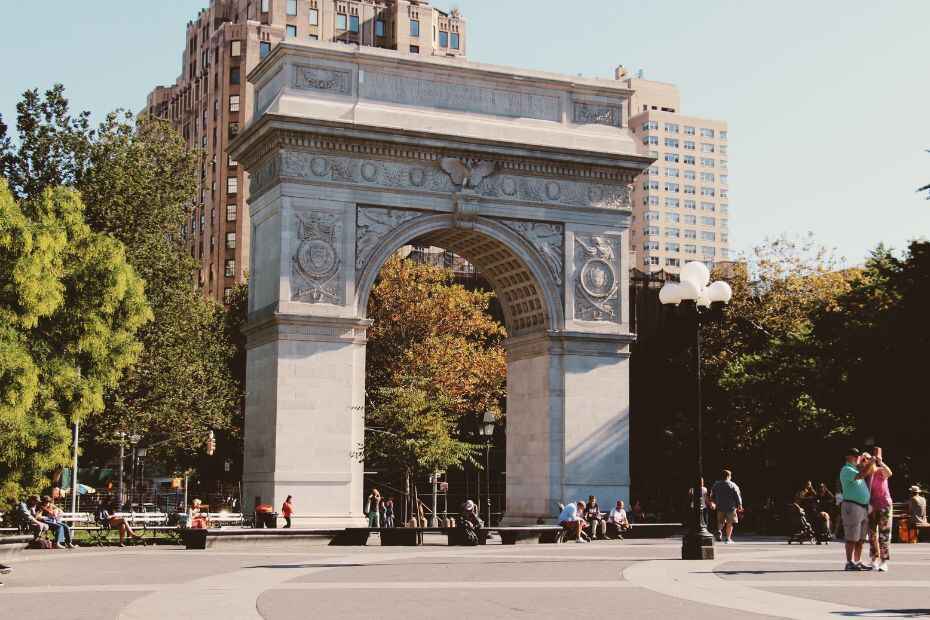
Learning as much as you can about the culture and history of the place you’re visiting will undoubtedly deepen your understanding and experience of it. A monument or a park might be pretty and fun to hang out in, but knowing that New York City’s Washington Square Park was built over the graves of 20,000 people makes for both an interesting angle and a more emotionally impactful piece.
Even if you want to write from the perspective of someone going into an experience blind, you still need to do research to travel anywhere — or you’ll end up writing a travelog where you barely find your way out of the airport parking lot.
While these are the main two skills you should focus on, there are a few more that can give you and your writing a boost.
Interviewing
A subset of research, learning how to interview effectively will broaden the scope of your knowledge and your writing. Sometimes, you need a perspective other than your own, and who better to tell you about all the hidden secrets of Barcelona than a local? It’s an invaluable skill — especially for a travel writer — to be able to go into a place and speak to people, to get their stories and perspectives so you can go beyond just being a tourist. It’s a way to pull back the curtain and really connect yourself and your reader with the wider world.
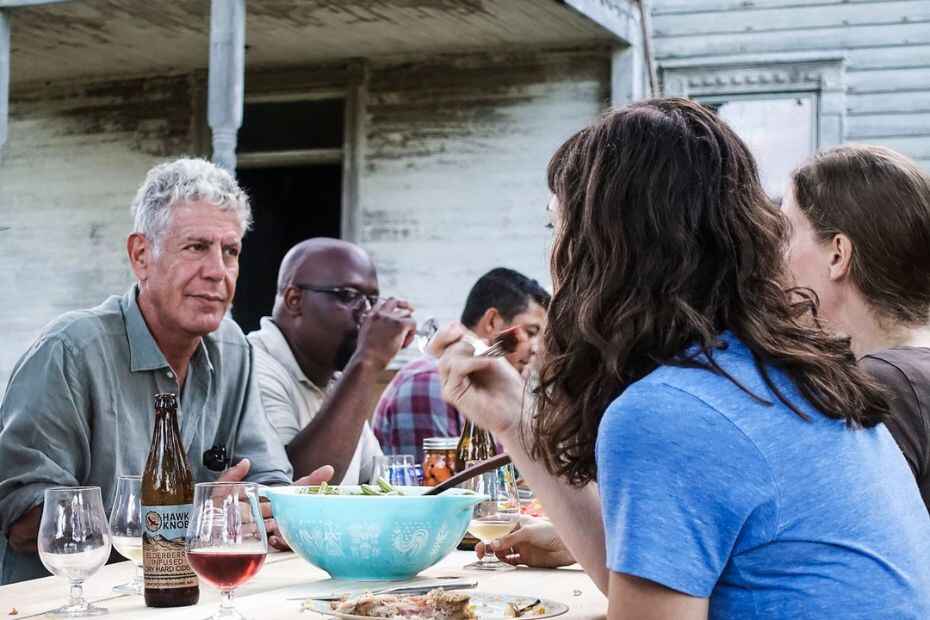
Travel writers do this quite often, and a great example can be seen in Anthony Bourdain’s TV show, Parts Unknown . On the surface, this food travel show showcases the cuisines of the world. But Bourdain’s interests, and thus the show’s, were much more focused on the lives of the people he’d meet along the way.
If you also want to write in a way that exceeds the usual ‘visit-here-and-eat-that’ humdrum of most so-called travel writing and really start to understand the people you’ll encounter, you’ll need to become a passable interviewer.
Finding people to interview, asking the right questions, and making your interviewee comfortable are the main things that go into conducting a successful interview. Before you go out into the wider world, you can practice with friends, but really, the best way to learn is by doing. Record your interviews or take notes to ensure you don’t forget anything and have quotes to use for when you write your story. And, of course, ask permission before you conduct the interview or use the material.
With your notes and quotes in order, you then need to do the hard part: figure out what’s relevant. You may have dozens of poignant quotes and conversations, but it’s inevitable that you’ll have more raw material than you’ll be able to use. There’s no one right way to make this judgment. It takes time, experimentation, and experience to figure which ones are the best and order them together into one coherent whole.
Stay up to date with the travel industry
While not necessarily a skill, part of being a good travel writer is being in the know about what’s happening in the travel industry. After all, the larger trends of people’s travel habits, popular destinations, and the state of major airlines and hotels influences the kind of information people are looking for. And it can always serve as inspiration for your next story. There are dozens of industry newsletters you can subscribe to that will keep you apprised of any new developments (including job openings and calls for pitches) in the world of travel, such as Lottie Gross’s Talking Travel Writing . Use them wisely.
Staying up to date is also knowing where the opportunities to monetize your writing lie. The travel industry is full of affiliate programs and content partnerships, where you can get paid for your work without having to sell it to a publisher or outlet. Your chances of landing these types of deals significantly increase if you have your own blog or social media accounts with a good amount of subscribers, but there may be other opportunities out there as well if you’re savvy.
Even travel writers who don’t consider themselves “influencers” can learn a lot from people creating video content relating to travel topics, especially when it comes to how to make a profit off their content. If you’re interested in running and making money off your own blog, knowing about programs like these and where to find them is incredibly important.
Whether you’re looking to get a brand partnership, pitch an online publication, or a guest post on a travel blog, learning the basics of search engine optimization (SEO) and applying it to your writing will help you as you search for opportunities. Essentially, SEO is about optimizing a web page — in this case, your article — to be read by a search engine and draw users to it. It’s no surprise, then, that many publications value writers who have SEO skills and can optimize their articles to bring more traffic to their website.
Learn to take good photos
Besides being a competent and compelling writer, there's another skill that you should look to hone: photography. As much as people enjoy reading about places they’ve never been to, descriptive writing and imagination can only go so far. When it comes to travel, a picture can truly speak more than a thousand words. And a video might be even better. Visual media adds extra color and context to your piece while complementing your writing.
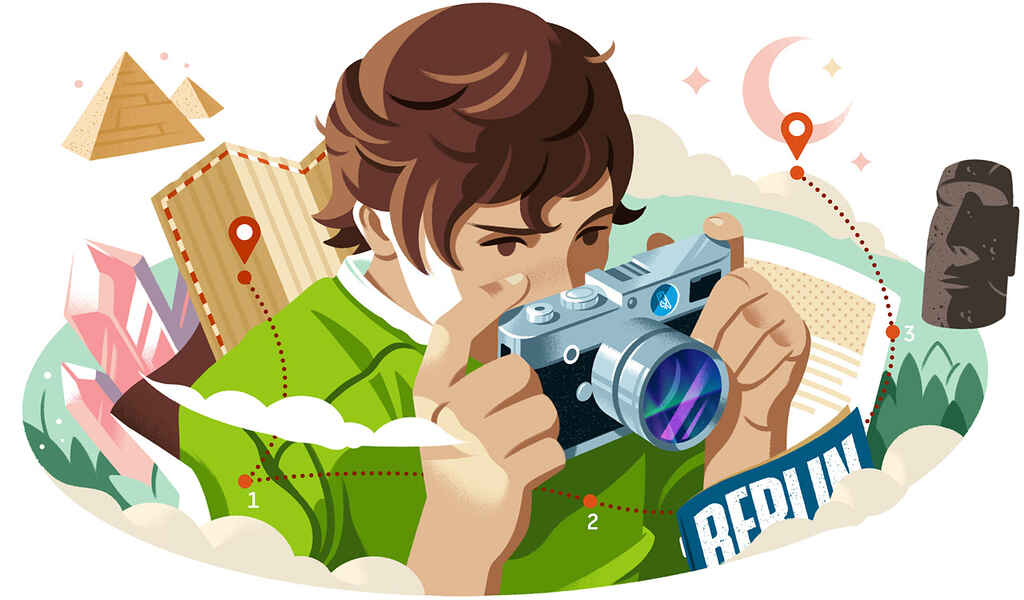
Depending on whether you’re freelancing or working full-time for a publication, you won’t always have a photographer following you on your journey. Learning the basics of photography can be helpful in those instances and make you a more well-rounded travel writer. In some cases, it might even be attractive to publications if you can provide your own photos. Consider posting what you capture on your personal blog, Instagram, or TikTok as well. Any way of building a following is great.
This doesn’t mean you must invest in a quality DSLR camera (though you certainly can). These days, many smartphones have top-of-the-line cameras that can take the kinds of stunning pictures of white sand beaches and ancient castles that readers are looking for. A beginner’s photography course can help you learn all the basics about lighting, color, and composition and have you snapping great shots in no time.
📸 Taking plenty of photos can also help you ace your descriptive writing, for those moments when you’re struggling to recall specific details about a place you visited.
Build a portfolio of work
Once you have a solid foundation of skills, you can begin creating your portfolio. While you might dream of being a staff writer at a travel publication, or make a living as a freelance travel writer, it’s unlikely that you’ll be able to jump straight into that role.
Find a niche you love
Unsurprisingly, travel writing is a popular choice for aspiring writers. Who doesn’t want to galavant around the world and make a living writing about your adventures? But, of course, that also means it’s a very competitive field, and standing out can be difficult. Finding a way to differentiate yourself will give you a leg up and provide a focus for your articles.
The great thing about travel writing is that there is a nearly never-ending number of niches you could devote yourself to. You can write exclusively about a certain country or area of the world or gear your work towards a specific audience, such as budget travelers, people traveling with family, or digital nomads. If you have a unique perspective, it’s likely that people will want to read about it.
That isn’t to say you can’t write outside your chosen subfield. Plenty of writers find success publishing in their niche and then expanding their reach to become a sort of jack of all trades. Having a focus will simply allow you to stand out from the crowd.
Collect some quality clips

First, you need to build up a reputation and a solid amount of quality clips — a journalistic term for published articles. They will serve as your resume, showing off your writing and research skills, as well as the topics you’re familiar with and your general style. As you start looking for ways to build your portfolio, internships, freelance opportunities, and blogging can all be great ways to start out.
💡If you’re curious about the many kinds of work travel writers can do, check out this post about the different types of travel writing .
📕And if you already have a travel writing blog, you might want to turn your blog into a book that you can pitch to publishers or self-publish.
Look for internships
Internships are a common way writers gain experience and clips. Magazines and online publications may allow aspiring travel writers to flex their skills and learn about what goes into professional travel writing. However, while there are paid internships in this field, many are likely unpaid. Whether you want to pursue an unpaid internship remains up to you, but we recommend valuing your time and pursuing paid internships when you can.
Consider freelance writing
Another option to consider is freelance writing . Pitching articles to travel publications will not only be a way to gain jobs and clippings but allows you to practice ideation and build up a personal brand, as you are entirely in charge of the topics you’re writing about. It also expands your network of contacts in the industry, which will help you as you continue to pitch magazines and might lead to a job somewhere down the road.

FREE RESOURCE
Writing Submissions Checklist
Make sure your magazine and contest submissions are prepped to impress.
And if you want to take complete control of your career, a subset of freelancing is blogging. Dozens of freelance travel writers supplement (or make a career out of) running their own personal blog. Having one will give you a ready-made portfolio of clips showing off your skills. This is where having a niche can be especially helpful, as it’s a way to set you apart from all the other travel blogs on the Internet.
Search for jobs and writing opportunities
With a solid portfolio of clips, it’s time to go out into the world and fully devote yourself to a career in travel writing. There are two main tracks you could take: finding a staff writer position at a magazine or becoming a freelance travel writer.
Finding full-time travel writer jobs

For many writers, the dream is to work full-time as a travel writer for a publication. It offers stability while letting you travel to different destinations to write and explore.
Although there are many travel-focused magazines like Conde Nast Traveler and Travel + Leisure that might have staff writer positions, don’t discount other publications. Some magazines and newspapers with completely different focuses have travel sections that need staff writers to keep them running.
For positions like this, a portfolio is especially important. Magazines want to see that writers have a background in journalism and are reliable writers who can deliver good-quality pieces on time. Previously being published is often proof of that. But part of building a portfolio is also building connections with people in the industry. Knowing someone at a magazine who is familiar with your work and can vouch for you can help you get your foot in the door and be hired as a staff writer.
Freelancing
Another option is to continue down the freelance path, pitching and writing your own stories. This route gives you a lot more freedom. You can decide which places to visit and which activities you want to do, and you’re always in charge of your own itinerary. Overall, you’re much less likely to work on a story you’re not interested in because an editor told you you must.
This is where picking a niche and having a blog can be especially helpful. Establishing yourself as an authority on a subject will draw people to your articles and give you credibility as you pitch publications. A website dedicated to your niche, with all your expertise located in one place, elevates your credibility and provides a useful resource for your readers — especially if you get a handle on SEO. Eventually, you can even turn your blog into a book and create another revenue stream.

The Full-Time Freelancer's Checklist
Get our guide to financial and logistical planning. Then, claim your independence.
Travel writing allows you to indulge in and subsidize your wanderlust and make a living off of it. More than that though, travel writing is a way to connect people across cultures and great distances, and build an appreciation for the uniqueness and diversity around us.
Continue reading
Recommended posts from the Reedsy Blog

Man vs Nature: The Most Compelling Conflict in Writing
What is man vs nature? Learn all about this timeless conflict with examples of man vs nature in books, television, and film.

The Redemption Arc: Definition, Examples, and Writing Tips
Learn what it takes to redeem a character with these examples and writing tips.

How Many Sentences Are in a Paragraph?
From fiction to nonfiction works, the length of a paragraph varies depending on its purpose. Here's everything you need to know.

Narrative Structure: Definition, Examples, and Writing Tips
What's the difference between story structure and narrative structure? And how do you choose the right narrative structure for you novel?

What is the Proust Questionnaire? 22 Questions to Write Better Characters
Inspired by Marcel Proust, check out the questionnaire that will help your characters remember things past.

What is Pathos? Definition and Examples in Literature
Pathos is a literary device that uses language to evoke an emotional response, typically to connect readers with the characters in a story.
Join a community of over 1 million authors
Reedsy is more than just a blog. Become a member today to discover how we can help you publish a beautiful book.

We made a writing app for you
Yes, you! Write. Format. Export for ebook and print. 100% free, always.

1 million authors trust the professionals on Reedsy. Come meet them.
Enter your email or get started with a social account:
Pros talking prose: the experts’ advice on how to improve your travel writing
May 25, 2018 • 7 min read

In search of some top tips to take your travel writing skills from proficient to prodigious? We chat to a selection of authors appearing at this year’s star-studded Hay Festival about how to cultivate captivating travel writing, their favourite destinations to write about, and the travel tomes that inspired them to hit the road.

Horatio Clare – beach resort despiser and one-time Arctic sailor
Horatio is a Welsh-British author who has published a glut of literary works, from acclaimed children’s books to personal memoirs. His latest travel-focused text, Icebreaker: A Voyage Far North , details his time aboard a Finnish icebreaker ship traversing the Bay of Bothnia.
What's your top tip for producing compelling travel writing?
You have to find somewhere that lights you in order to write well. If beach resorts aren't your thing it's very difficult to produce a good piece about one. I personally look for a mixture of culture and nature; so for example, the east coast of Madagascar is easy, because the people, landscapes and animal and bird life are all so rich with interest and diversity. For me, combining history and local legends with the mystery and drama of the natural world enables me to produce my best work.
What's your favourite destination to write about?
Anywhere that is not a beach resort! I love writing about sub-Saharan Africa : Zambia and Tanzania are tremendous. But then Algiers is one of my favourite cities and Sicily is beautiful, and historically rich, and its culture and politics are a whirl of splendour and horror.
What's your favourite work of travel literature?
It changes but I am a great fan of Norman Lewis. His Naples ‘44 is peerless, but all of his works are wonderful. Voices of the Old Sea , about southern Spain before development and tourism got to it, is the very model of how you need to understand and submerge yourself in a place in order to produce a masterpiece. Of recent writing, Michael Jacobs' The Robber of Memories , about a journey up the Magdalena river in Colombia , is fabulous.

Patrick Barkham – history buff and anglophile
Born in Norfolk, England, Patrick is Natural History Writer for the Guardian and author of several travel titles, including The Butterfly Isles , which was shortlisted for the Ondaatje Prize, and Islander , which delves into daily life on some of Britain's smaller islands.
When I am writing about a place I'm travelling around, I put my phone away and try to get completely in the moment, taking out my pen and notebook and writing obsessively about everything I see, hear, taste, touch, smell and think about. Attention to the small details of a place hopefully makes for more evocative writing.
I like writing about Britain because even in a supposedly homogenised and globalised society my home country has noticeable differences between even the most proximate places. It also has so much depth and complexity, and so many untold stories still to tell. Writing about 'home' also reduces some of the hazards of cultural imperialism, although the Welsh and the Scots have had to endure a long tradition of enraptured English visitors (such as me!) writing about them.
It's an obvious choice but I was very taken with Patrick Leigh Fermor's Between the Woods and the Water – for romance, chutzpah and warm-heartedness. I also admire what must be a fairly creative reconstruction of vivid memories, with the author writing more than four decades after he made his journey across Europe .
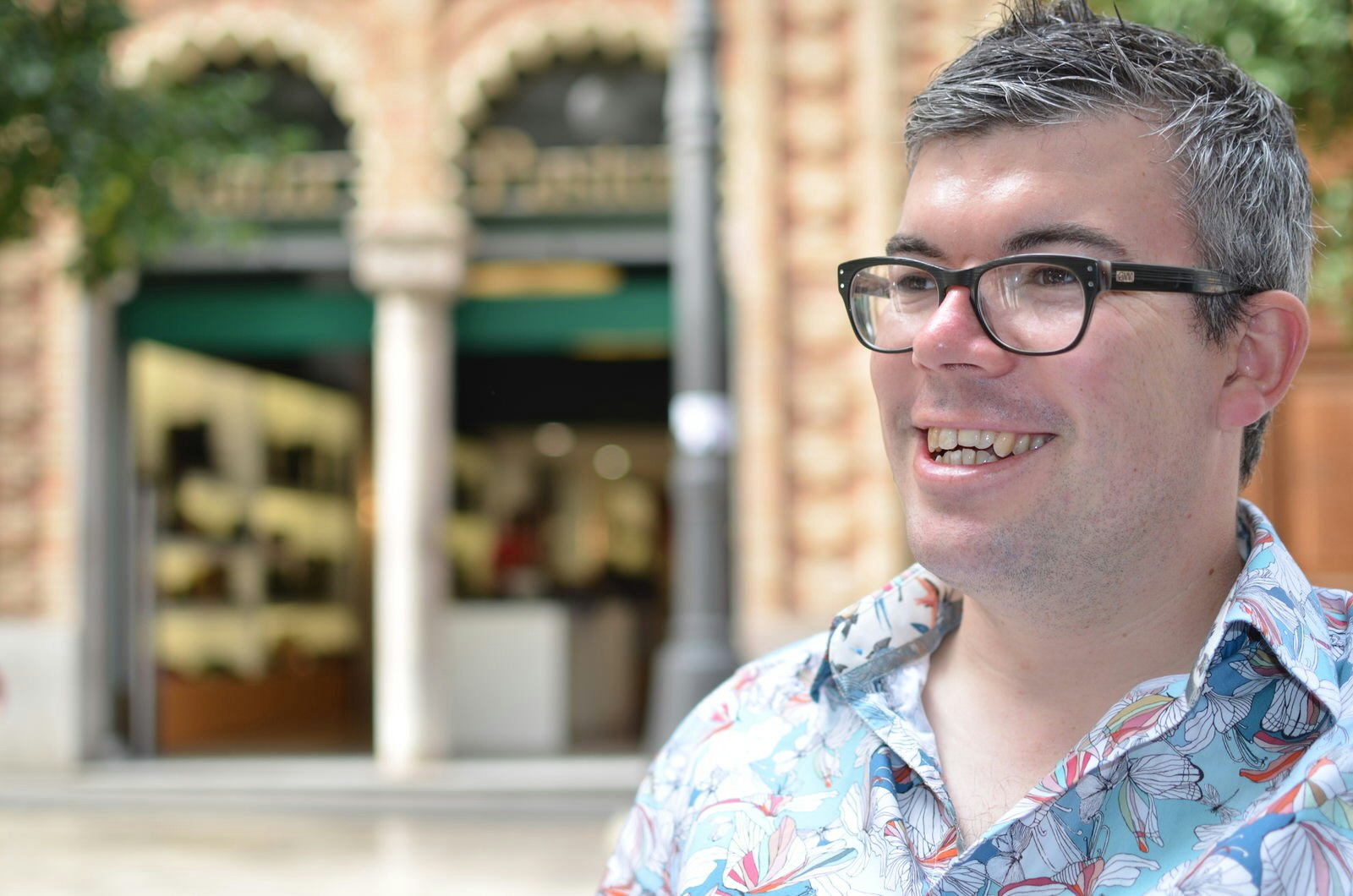
Dylan Moore – familiarity seeker and hispanophile
Dylan Moore is an English teacher, writer and editor from Newport, Wales. He is the Hay Festival Creative Wales International Fellow 2018/19 and author of Driving Home Both Ways , a book that is part essay collection, part travelogue through life.
Find equivalence. It may sound like a highfalutin concept, but wherever I go in the world, and however different it is from my home in Wales , I am on the lookout for relatability. Where’s the Cardiff Bay? What do they have instead of Welsh cakes? Who’s the Gareth Bale? More often than not, the practice of holding home and abroad up to each other like a pair of mirrors sheds unusual light on the sense of a place. Once you’ve seen the parallels, it’s often easier to examine the smaller, more interesting ways in which places are different.
Spain . Some might stray little further than sun, sand and sangria or a city break in Barcelona , but for me the Iberian peninsula is a subcontinent. From the pilgrimage trail of the Camino de Santiago along the green Basque coast in the north to the majesty of the Alhambra palace in the south, from the intricate Moorish tile designs of Seville to the futuristic architecture of Santiago Calatrava, and from the art of Goya and Picasso to the noise and glamour of La Liga, Spain has it all, and more.
Abroad by Paul Fussell is a work of literary criticism about travel writing between the wars that touches upon many classics of the genre, including works by D.H. Lawrence, Evelyn Waugh, George Orwell and Robert Byron. Though I love the work as a whole, I don’t agree with the author’s argument that the twenties and thirties represented ‘the last great age of travel’; the fact that airplanes have largely replaced ocean liners and long-distance sleeper trains may mean we travel differently now, but for me the pull of elsewhere has lost none of its romance, and if anything the greater accessibility of ‘abroad’ has opened travel – and travel writing – to a wider range of voices.
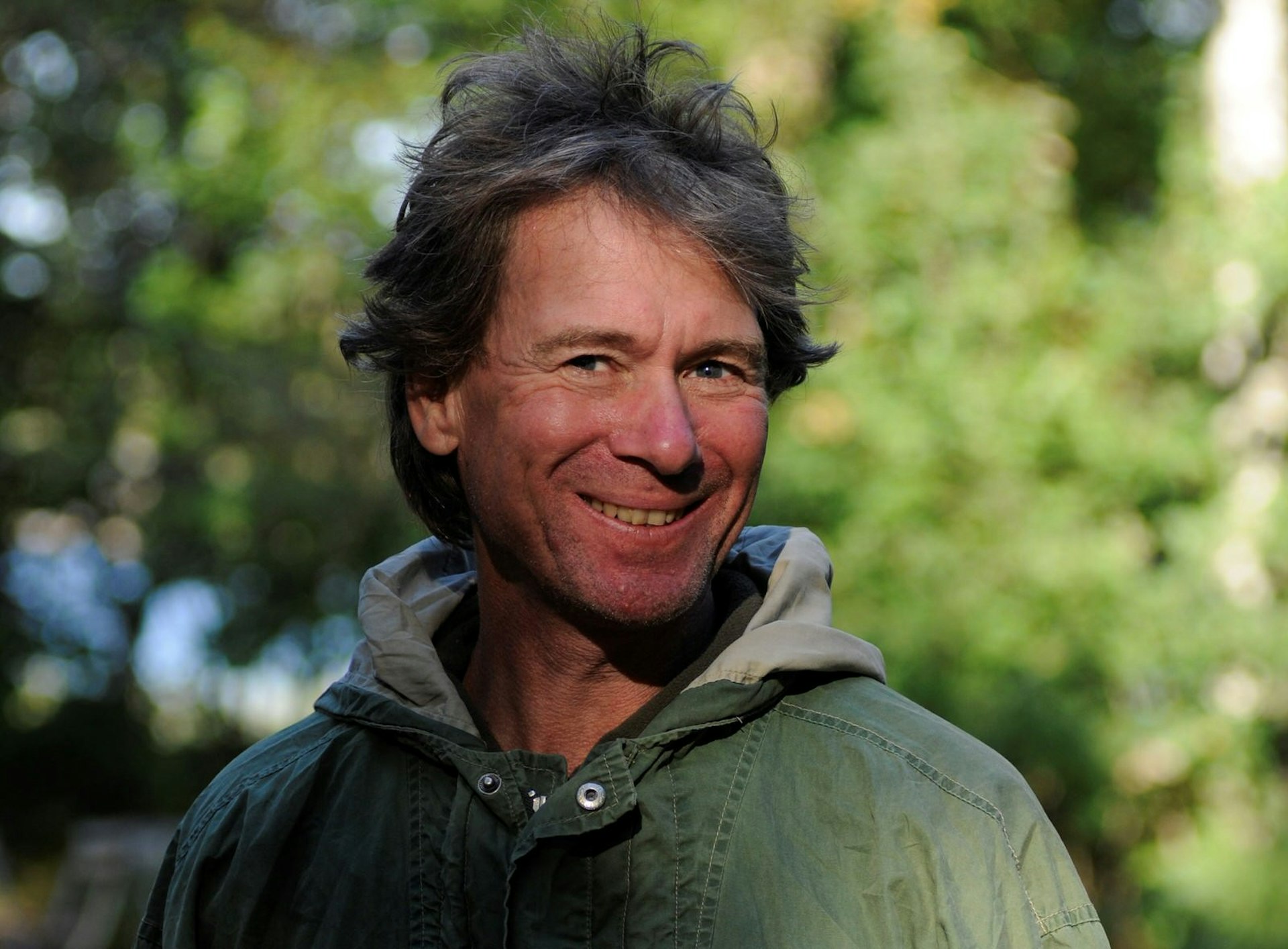
Jasper Winn – slow adventurer and extreme kayaker
Jasper Winn is a self-titled ‘slow adventurer’ who has spent most of his life travelling the world and now serves as the Writer in Residence for the Canal and River Trust. Jasper has written two books focused around long-distance kayaking: Paddle and upcoming title Waterways: A thousand miles along Britain's canals .
It seems to me that the most important commodity for the modern travel writer is having time. Committing a serious amount of time to researching a subject, to talking to people, to travelling slowly, to waiting around just to see what happens, to reading tens of books on a destination, is the key to producing great travel writing.
I miss being totally out of touch. For my first long distance trip across the Sahara and through West Africa in the early 1980s, initially hitchhiking and then pedalling a 20 quid bike I bought in a market in Ouagadougou , I had one phone call back to Europe in five months; apart from that and a few poste restante letters I was totally out of touch with friends and family. The internet has changed everything, and mostly for the better, but a good trip is still anywhere that feels wild, where I have lots of time and few plans.
Laurie Lee's As I Walked Out One Summer's Morning was the book that sent me off as a teenager, hitchhiking from Ireland to Andalucía , playing guitar on streets and in cafes to eat. Meanwhile, Irish travel writer Peter Somerville-Large's The Coast of West Cork , about a cycle trip along Cork 's coast where I grew up, made my own corner of the world both more familiar and much richer. That book showed me how writing could travel through time as much as through a landscape, weaving history, nature, social observation and quirky humour into one compelling narrative; an excellent example for anyone hoping to one day produce a great travel tome of their own.
You can hear more insights from all of these authors and many more at the Hay Festival, which runs from 24 May to 3 June. Find out more at hayfestival.org or follow @hayfestival
https://shop.lonelyplanet.com/products/how-to-be-a-travel-writer-4
Explore related stories
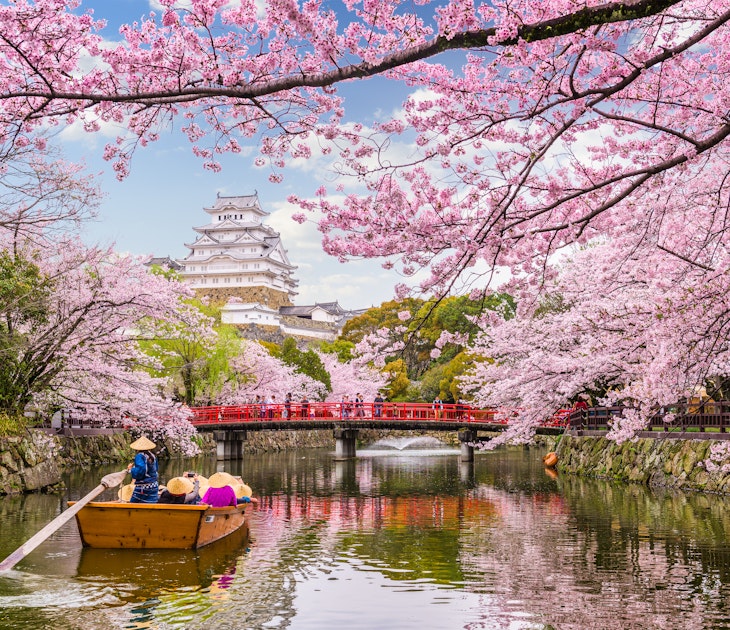
Tips & Advice
May 3, 2024 • 14 min read
Should you book your next trip with cash or points? Here's an expert's guide and everything you need to be considering.
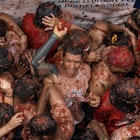
May 3, 2024 • 6 min read
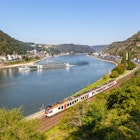
May 3, 2024 • 5 min read

Apr 30, 2024 • 8 min read
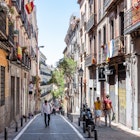
Apr 30, 2024 • 4 min read

Apr 26, 2024 • 6 min read

Apr 25, 2024 • 7 min read

Apr 19, 2024 • 10 min read

Apr 19, 2024 • 11 min read

Apr 16, 2024 • 7 min read
Trending Post : 52 Best Things to do in Ireland

Great Travel Writing Examples from World Renowned Travel Writers
Are you ready to be a better travel writer? One of the best ways to do this is to read great travel writing examples from great travel writers.
Writing about travel in a way that keeps your reader reading is not always easy. Knowing how to write an irresistible first paragraph to entice the reader to keep reading is key. Writing a lede paragraph that convinces the reader to finish the article, story or book is great travel writing. This article features travel writing examples from award-winning travel writers, top-selling books, New York Times travel writers, and award-winning travel blogs.
Ads are how we pay our bills and keep our blog free for you to enjoy. We also use affiliate links; if you make a purchase through them, we may receive a small commission at no cost to you.

The writers featured in this article are some of my personal favorite travel writers. I am lucky to have met most of them in person and even luckier to consider many friends. Many I have interviewed on my podcast and have learned writing tips from their years of travel writing, editing and wisdom.
11 Great Travel Writing Examples
Writing with feeling, tone, and point of view creates a compelling story. Below are examples of travel writing that include; first paragraphs, middle paragraphs, and final paragraphs for both travel articles as well as travel books.
I hope the below examples of travel writing inspire you to write more, study great travel writing and take your writing to a higher level.
Writing Example of a Travel Book Closing Paragraphs

Don George is the author of the award-winning anthology The Way of Wanderlust: The Best Travel Writing of Don George , and the best-selling travel writing guide in the world: How to Be a Travel Writer .
He is currently Editor at Large for National Geographic Travel, and has been Travel Editor at the San Francisco Examiner-Chronicle, Salon, and Lonely Planet.
I had the wonderful opportunity to see Don speak at Tbex and read from one of his books as well as interview him on the Break Into Travel Writing podcast. You can listen to the full podcast here .
Below is the closing of Don’s ebook: Wanderlust in the Time of Coronavirus: Dispatches from a Year of Traveling Close to Home
I continued hiking up to Lost Trail and then along Canopy View Trail. Around noon I serendipitously came upon a bench by the side of the trail, parked my backpack, and unpacked my lunch. Along with my sandwiches and carrot sticks, I feasted on the tranquility and serenity, the sequoia-swabbed purity of the air, the bird and brook sounds and sun-baked earth and pine needle smells, the sunlight slanting through the branches, the bright patch of blue sky beyond.
At one point I thought of shinrin-yoku, forest bathing, the Japanese practice that has become widely popular in the U.S. This was a perfect example of shinrin-yoku, I thought: Here I am, alone in this forest, immersed in the sense and spirit of these old-growth redwoods, taking in their tranquility and timelessness, losing myself to their sheer size and age and their wild wisdom that fills the air.
I sat there for an hour, and let all the trials, tremors, and tribulations of the world I had left in the parking lot drift away. I felt grounded, calm, quiet—earth-bound, forest-embraced.
In another hour, or two, I would walk back to the main paved trail, where other pilgrims would be exclaiming in awe at the sacred sequoias, just as I had earlier that day.
But for now, I was content to root right here, on this blessed bench in the middle of nowhere, or rather, in the middle of everywhere, the wind whooshing through me, bird-chirps strung from my boughs, toes spreading under scratchy pine needles into hard-packed earth, sun-warmed canopy reaching for the sky, aging trunk textured by time, deep-pulsing, in the heart of Muir Woods.
- You can read the whole story here: Old Growth: Hiking into the Heart of Muir Woods
- Please also download Don’s free ebook here: Wanderlust in the Time of Coronavirus
- In addition to writing and editing, Don speaks at conferences, lectures on tours around the world, and teaches travel writing workshops through www.bookpassage.com .

Writing Example of a Travel Book Intro Paragraphs
Francis tapon.

Francis Tapon , author of Hike Your Own Hike and The Hidden Europe , also created a TV series and book called The Unseen Africa, which is based on his five-year journey across all 54 African countries.
He is a three-time TEDx speaker. His social media username is always FTapon. I interviewed Francis on the Break Into Travel Writing podcast about “How to Find An Original Point of View as a Travel Writer “. You can listen to the full podcast here .
Below is the opening of Francis’ book, The Hidden Europe:
“This would be a pretty lousy way to die,” I thought.
I was locked in an outhouse with no way out. Outhouses sometimes have two latches—one on the outside and one on the inside. The outside latch keeps the door shut to prevent rodents and other creatures who like hanging out in crap from coming in. Somehow, that outer latch accidentally closed, thereby locking me in this smelly toilet. I was wearing a thin rain jacket. The temperature was rapidly dropping.
“This stinks,” I mumbled. It was midnight, I was above the Arctic Circle, and the temperatures at night would be just above freezing. There was no one around for kilometers. If I didn’t get out, I could freeze to death in this tiny, smelly, fly-infested shithole.
My mom would kill me if I died so disgracefully. She would observe that when Elvis died next to a toilet, he was in Graceland. I, on the other hand, was in Finland, not far from Santa Claus. This Nordic country was a jump board for visiting all 25 nations in Eastern Europe.
You can find his book on Amazon: The Hidden Europe: What Eastern Europeans Can Teach Us
For $2 a month, you can get Francis’ book as he writes it: Patreon.com/ftapon
Intro (Lede) Paragraph Examples of Great Travel Writing Articles
Michele peterson.

Former banking executive Michele Peterson is a multi-award-winning travel and food writer who divides her time between Canada, Guatemala, and Mexico (or the nearest tropical beach).
Former banking executive Michele Peterson is a multi-award-winning travel and food writer who divides her time between Canada, Guatemala, and Mexico (or the nearest tropical beach). Her writing has appeared in Lonely Planet’s Mexico from the Source cookbook, National Geographic Traveler, Conde Nast’s Gold List, the Globe and Mail, Fifty-five Plus and more than 100 other online and print publications.
She blogs about world cuisine and sun destinations at A Taste for Travel website. I met Michele on my first media trip that took place in Nova Scotia, Canada. I also had the pleasure of interviewing about “ Why the Odds are in Your Favor if you Want to Become a Travel Writer” . You can listen to the full podcast here .
Michele’s Lede Paragraph Travel Writing Example
I’m hiking through a forest of oak trees following a farmer who is bleating like a pied piper. Emerging from a gully is a herd of black Iberian pigs, snuffling in response. If they weren’t so focused on following the swineherd, I would run for the hills. These pigs look nothing like the pink-cheeked Babe of Hollywood fame.
These are the world’s original swine, with lineage dating back to the Paleolithic Stone Age period where the earliest humans decorated Spain’s caves with images of wild boars. Their powerful hoofs stab the earth as they devour their prized food, the Spanish bellota acorn, as fast as the farmer can shake them from the tree with his long wooden staff. My experience is part of a culinary journey exploring the secrets of producingjamón ibérico de Bellota, one of the world’s finest hams.
You can read the full article here: Hunting for Jamón in Spain
Perry Garfinkel

Perry Garfinkel has been a journalist and author for an unbelievable 40 years, except for some years of defection into media/PR communications and consulting.
He is a contributor to The New York Times since the late ’80s, writing for many sections and departments. He has been an editor for, among others, the Boston Globe, the Middlesex News, and the Martha’s Vineyard Times.
He’s the author of the national bestseller “ Buddha or Bust: In Search of the Truth, Meaning, Happiness and the Man Who Found Them All ” and “ Travel Writing for Profit and Pleasure “.
Perry has been a guest on my podcast twice. He gave a “ Master Class in Travel Writing ” you can listen to the full podcast here . He also shared “ How to Find Your Point Of View as a Travel Writer ” you can listen to the full episode here .
Perry’s Lede Travel Article Example from the New York Times
SAN FRANCISCO — A block off Grant Avenue in San Francisco’s Chinatown – beyond the well-worn path tourists take past souvenir shops, restaurants and a dive saloon called the Buddha Bar – begins a historical tour of a more spiritual nature. Duck into a nondescript doorway at 125 Waverly Place, ascend five narrow flights and step into the first and oldest Buddhist temple in the United States.
At the Tien Hau Temple, before an intricately carved gilded wooden shrine and ornate Buddha statues, under dozens of paper lanterns, Buddhists in the Chinese tradition still burn pungent incense and leave offerings to the goddess Tien Hau in return for the promise of happiness and a long life.
You can read the full article here: Taking a Buddhist pilgrimage in San Francisco
Elaine Masters

Elaine Masters apologizes for pissing off fellow travelers while tracking story ideas, cultural clues, and inspiring images but can’t resist ducking in doorways or talking with strangers.
She’s recently been spotted driving her hybrid around the North American West Coast and diving cenotes in the Yucatan. Founder of Tripwellgal.com, Elaine covers mindful travel, local food, overlooked destinations and experiences. Elaine was a guest on my podcast where we spoke about “ How to Master the CVB Relationship “. You can listen to the full podcast here .
Elaine’s Lede Example
I jiggered my luggage onto the escalator crawling up to the street. As it rose into the afternoon light, an immense shadow rose over my shoulder. Stepping onto the sidewalk, I burst into giggles, looking like a madwoman, laughing alone on the busy Barcelona boulevard. The shadow looming overhead was the Sagrada Familia Cathedral. It had mesmerized me forty years earlier and it was the reason I’d finally returned to Spain.
You can read the full article here: Don’t Miss Going Inside Sagrada Familia, Barcelona’s Beloved Cathedral

Along with his wife, photographer Mary Gabbett, Bret Love is the Co-Founder/Editor In Chief of Green Global Travel and the Blue Ridge Mountains Travel Guide.
He’s also an award-winning writer whose work has been featured by more than 100 publications around the world, including National Geographic, Rolling Stone, American Way, the Washington Post, and the New York Times.
Bret’s Lede Example
Congo Square is quiet now. Traffic forms a dull drone in the distance. A lone percussionist taps out ancient tribal rhythms on a two-headed drum. An air compressor from Rampart Street road construction provides perfectly syncopated whooshes of accompaniment.
Shaded park benches are surrounded by blooming azaleas, magnolias, and massive live oaks that stretch to provide relief from the blazing midday sun. It’s an oasis of solitude directly across the street from the French Quarter.
Congo Square is quiet now. But it’s here that the seeds of American culture as we know it were sown more than 200 years ago. And the scents, sounds, and sights that originated here have never been more vital to New Orleans than they are now, more than a decade after Hurricane Katrina devastated the city.
You can read the full article here: Treme, New Orleans (How Congo Square Was The Birthplace Of American Culture)
Middle Paragraph Examples of Great Travel Writing Articles
Mariellen ward.

Canadian travel writer and blogger Mariellen Ward runs the award-winning travel site Breathedreamgo.com , inspired by her extensive travels in India.
She has been published in leading media outlets worldwide and offers custom tours to India through her company India for Beginners. Though Canadian by birth, Mariellen considers India to be her “soul culture” and she is passionate about encouraging mindful travel.
Mariellen’s Middle Paragraph Example
While the festival atmosphere swirled around me, I imbued my diya with hope for personal transformation. I had come to India because a river of loss had run through my life, and I had struggled with grief, despair and depression for eight years. I felt I was clinging to the bank, but the effort was wearing me out. Deciding to leave my life and go to India was like letting go of the bank and going with the flow of the river. I had no idea where it would lead me, what I would learn or how I would change. I only knew that it was going to be big.
You can read the full article here: The River: A tale of grief and healing in India

Joe Baur is an author and filmmaker from Cleveland currently based in Berlin. His work has appeared in a variety of international publications, including BBC Travel, National Geographic, and Deutsche Welle.
He regularly reports for the Jewish Telegraphic Agency and is the author of Talking Tico detailing his year of living in Costa Rica and traveling around Central America. I interviewed Joe about “ How to Find Unique Travel Stories “. You can listen to the full podcast here .
Joe Baur’s Middle Paragraph Example
I first became aware of the Harz mountains and the Brocken when reading the works of some of Germany’s great writers, like Goethe and Heinrich Heine. Legends of witches congregating with the devil being the main theme of the mountain’s mythology. I, however, was more interested in a refreshing time spent in nature rather than reveling with the devil.
The first stage from Osterode to Buntenbock was a warm-up to the more rigorous stages ahead. It began on sidewalks before sliding into the forest sporting a healthy shade of green — a gentle jaunt that made my hiking boots feel a bit like overkill given the dry, pleasant weather.
You can read the full article here: Follow the witch through the forest: 5 days hiking Germany’s Harz
Samantha Shea

Samantha is a freelance travel writer with bylines in Matador Network, GoNomad and more. She also runs the travel blog Intentional Detours which provides thorough guides and tales related to offbeat adventure travel in South Asia and beyond.
When she’s not writing she enjoys cycling, hiking, the beach, as well as language learning.
Samantha Shea’s Middle Paragraph Example
Suddenly, the spark of a match pulsed through the early-fall afternoon and my head snapped towards the men. Amir touched the flame to an unidentifiable object that seconds later made itself known by the deep earthy scent of Pakistani hashish.
Amir’s ice blue eyes focused intently on his creation: a combination of tobacco and nuggets of greenish-brown charas. He forced the mixture back into the cigarette, before bringing it to his pursed lips, flicking the match, and setting flame to his high.
I reached out from the cot to take my turn and took a deep inhale, acutely pleased. I savored the familiar burn of the drag, the rows and rows of corn and apple plants in front of me, the stuttered cacophony of animal exclamations behind me, and the generosity of the men to my left, some of whom we had just met an hour before.
You can read the full article here: Thall Tales: A Hazy Afternoon in Thall, Pakistan
Final Paragraph Example of Great Travel Writing Articles
Cassie bailey.
Cassie is a travel writer who has solo backpacked around Asia and the Balkans, and is currently based in Auckland. Alongside in-depth destination guides, her blog has a particular focus on storytelling, mental health, and neurodiversity.
Cassie’s Final Paragraphs Example
So my goal is to feel, I guess. And I don’t mean that in a dirty way (although obvz I do mean that in a dirty way too). This is why we travel, right? To taste crazy new foods and to feel the sea breeze against our skin or the burn on the back of our legs on the way down a mountain. We want to feel like shite getting off night buses at 4am and the sting of mosquito bites. We know we’re going to feel lost or frustrated or overwhelmed but we do it anyway. Because we know it’s worth it for the ecstasy of seeing a perfect view or making a new connection or finding shitty wine after a bad day.
My goal is never to become numb to all of this. To never kid myself into settling for less than everything our bodies allow us to perceive. I’m after the full human experience; every bit, every feeling.
You can read the full article here: Goals inspired by life as a solo backpacker
Lydia Carey

Lydia Carey is a freelance writer and translator based out of Mexico City who spends her time mangling the Spanish language, scouring the country for true stories and “researching” every taco stand in her neighborhood.
She is the author of “ Mexico City Streets: La Roma ,” a guide to one of Mexico City’s most eclectic neighborhoods and she chronicles her life in the city on her blog MexicoCityStreets.com .
Lydia’s Final Paragraphs Example
Guys from the barrio huddle around their motorcycles smoking weed and drinking forties. Entire families, each dressed as St. Jude, eat tacos al pastor and grilled corn on a stick. Police stand at a distance, keeping an eye on the crowd but trying not to get too involved.
After this celebration, many of the pilgrims will travel on to Puebla where they will visit some of the religious relics on display in the San Judas church there. But many more will simply go back to their trades—legal and illegal—hoping that their attendance will mean that San Judas protects them for another year, and that he has their back in this monster of a city.
You can read the full article here: San Judas de Tadeo: Mexico’s Defender of Lost Causes

I hope you enjoyed these examples of travel writing and they have inspired you to want to write more and write better! The next article that will be published is a follow-up to this and will include travel writing examples from my first travel writing teacher, Amanda Castleman. This article will include travel writing tips from Amanda and travel writing examples from her students as well as one from her own writing.

Follow 52 Perfect Days on Facebook | Twitter | Pinterest | Instagram
If you liked it, please share it. Thank you!
- Pinterest 1
Alexa Meisler is the editorial director of 52 Perfect Days. Born in Paris, France she has since lived in Chicago, San Francisco, Los Angeles and Portland, Oregon. She currently resides in San Diego with her husband and son where they enjoy exploring California and Mexico.
Travel has always been a part of her life; traveling to such places as Morocco, Tangiers and Spain as a young child as well as taking many road trips to Mexico with her grandparents as a young girl. Since then, she has traveled abroad to locations such as Russia, Taiwan and throughout Europe.
Prior to working at 52 Perfect Days she was a freelance travel writer; focusing on family and women’s adventure experiences.
Leave a Reply Cancel reply
Your email address will not be published. Required fields are marked *

- How to Become a Travel Writer: Complete guide for travelogue writing
- Self Publishing Guide
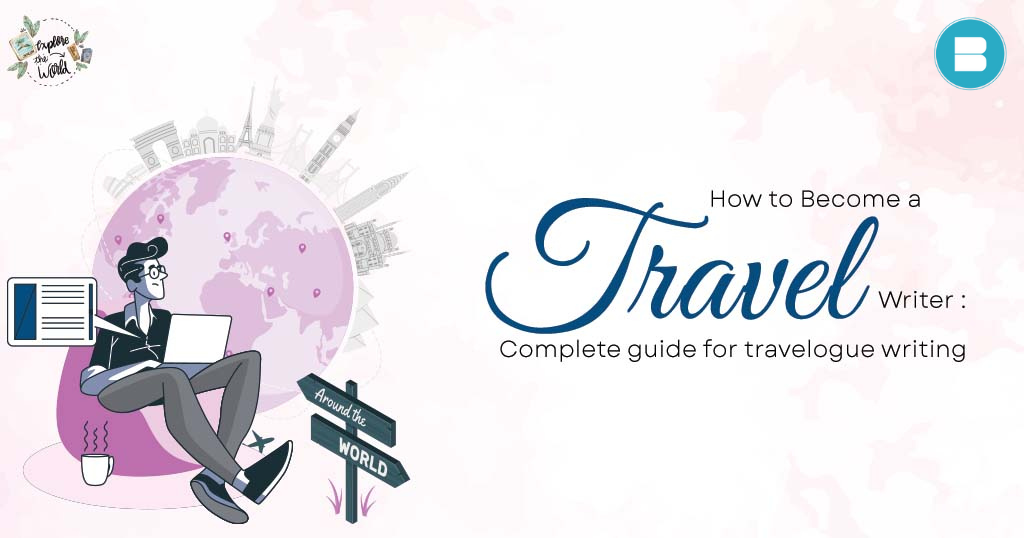
The world is a treasure trove of experiences waiting to be explored and shared, and becoming a travel writer is your passport to capturing and narrating these adventures. If you’ve ever felt the wanderlust in your veins and a passion for storytelling in your heart, then embarking on the path of a travel writer might just be your calling. In this comprehensive guide, we’ll walk you through the intricate art of travelogue writing, offering insights, tips, and a roadmap to help you embark on this exciting journey of words.
Understanding the Role of a Travel Writer
Travel writers embark on journeys that transcend physical landscapes; they immerse themselves in cultures, traditions, and stories that shape the world. Their role is to bring these experiences to life through words, painting vivid pictures for readers who long to discover new horizons. Beyond merely documenting destinations, travel writers craft narratives that transport readers, evoking emotions and sparking a sense of wanderlust. They uncover the hidden stories that breathe life into places, connecting readers to the heart and soul of a locale. Travel writers are not just chroniclers of journeys; they are ambassadors of exploration, inviting others to embark on their own adventures armed with insights and inspiration.
Developing Your Writing Style
In the realm of travel writing, a writer’s style becomes their distinct fingerprint, an expression of their literary personality. This style is the lens through which readers perceive the world you describe. It’s crucial to cultivate a voice that resonates authentically with your experiences and perceptions. Experimentation is key; try on different stylistic garments, from lush, poetic prose to succinct, informative language. Reading a diverse range of travel literature can broaden your horizons and help you pinpoint your comfort zone. Whether you’re crafting a blog post, an article, a book, or a social media update, your style should reflect your genuine self. The more you explore and experiment, the more refined and unique your writing style will become, captivating readers and making your travel tales truly unforgettable.
Mastering the Art of Observation
You may also like: Top 10 Best Biographies of All Time

Choosing Your Niche
In the vast realm of travel writing, finding your niche is like discovering your compass in a labyrinth of possibilities. Your niche isn’t just a subject; it’s your lens for exploring the world. It’s a culinary journey that takes you from street food stalls to Michelin-starred restaurants, or an adventure seeker’s quest for adrenaline in the great outdoors. Your niche sets you apart and lends your writing a distinct perspective. It allows you to delve deep, becoming an expert in your chosen field. Whether it’s sustainable travel, solo backpacking, cultural immersion, or any other passion, your niche shapes your identity as a travel writer and connects you with an audience that shares your interests.
Research: The Backbone of Travel Writing
Behind the enchanting stories of travel writing lies the backbone of thorough research. This groundwork is essential to creating narratives that are not only immersive but also accurate and informative. As you plan your journey, delve into the history and cultural nuances of your destination. Understand the significance of local landmarks, festivals, and traditions. Connect with locals to gather insights that may elude tourists’ eyes. A well-researched travel piece goes beyond surface-level description; it weaves historical context and cultural richness into the narrative tapestry. Research transforms your writing from subjective musings to well-rounded, engaging tales that educate and inspire readers. Just as an architect relies on blueprints, a travel writer relies on research to construct narratives that stand strong, with credibility and authenticity as their pillars.
Crafting Compelling Stories
You may also like: Unlocking Success: How to Sell Books Online Effectively
Honing Your Photography Skills
In the digital age, visuals serve as windows into the worlds you describe. Basic photography skills can be a powerful asset for a travel writer. A well-captured image encapsulates a place’s essence, and a picture truly can speak a thousand words. Learning to frame captivating shots enhances your storytelling. High-quality photos complement your prose, offering readers a visual portal to your adventures. Skillful photography brings authenticity and relatability to your narratives, reinforcing the authenticity of your experiences. Whether it’s a sweeping landscape, a bustling market, or a candid portrait, your photos harmonise with your words to craft a multidimensional story that lingers in readers’ minds.
Building an Online Presence
In the digital landscape, an online presence is the bridge between your words and a global audience. Launching a travel blog or website serves as a portfolio where your stories reside. Here, you showcase your adventures, insights, and expertise. Leverage social media platforms as portals into your journeys—a place to share real-time snippets, behind-the-scenes moments, and reflections. Engage with your readers through conversations, fostering a community that rallies around your explorations. By cultivating this virtual tribe, you forge connections that amplify your impact. An online presence not only helps you reach a wider audience but also becomes a platform for sharing your passion and inspiring others to embark on their own journeys.
Pitching and Networking
Pitching your travel stories is akin to casting a net into the vast sea of publications, aiming to capture the attention of editors and readers. Thorough research is paramount; identify magazines, newspapers, and websites that resonate with your writing style and niche. Tailor your pitches to align with their editorial focus. Craft a succinct yet enticing pitch that highlights the uniqueness of your story and why it’s a perfect fit for their audience. Networking serves as a bridge to these opportunities. Engage with editors, connect with fellow writers, and attend industry events. Building relationships within the travel writing community not only opens doors but also fosters a supportive network where insights, advice, and collaborations flourish, propelling your journey as a travel writer.
Continual Growth and Learning
You may also like: Find the Benefits of Reading Books Online: Beyond the Pages
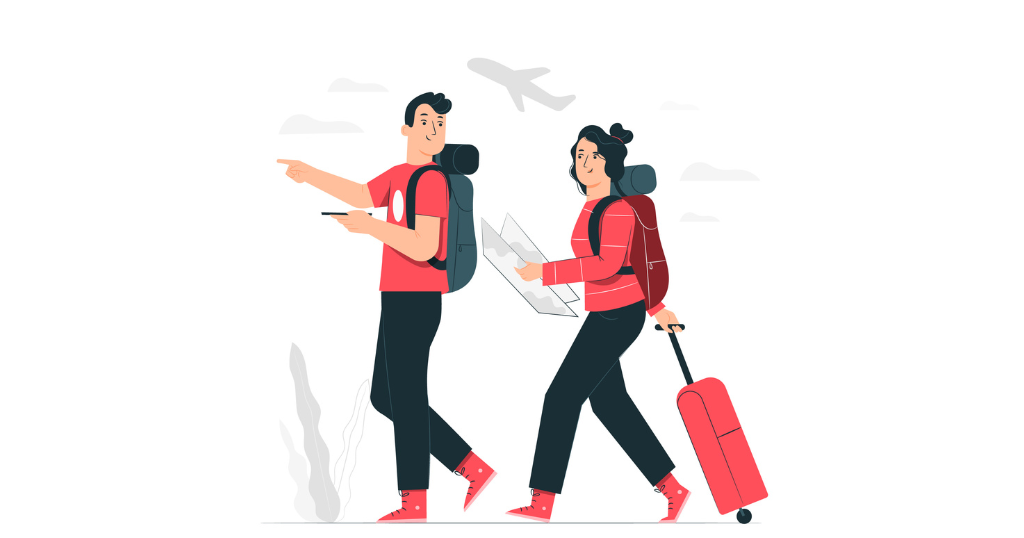
To embark on writing a travelogue, start by selecting a destination that has left a significant impact on you. Reflect on your experiences, emotions, and observations during the journey. Organise your thoughts and create an outline to structure your narrative. Begin with a captivating introduction that hooks readers and sets the tone for your story. Incorporate vivid descriptions, sensory details, and personal anecdotes to transport readers to the destination. Share cultural insights, interactions with locals, and unique experiences to make your travelogue engaging. Blend your personal perspective with informative content, and wrap up with a reflective conclusion. Remember, authenticity and passion are key to crafting a compelling travelogue that resonates with readers.
Becoming a full-time travel writer requires dedication, skill-building, and strategic steps. Start by honing your writing skills through practise and feedback. Create a professional online portfolio showcasing your travel writing. Pitch your work to travel magazines, blogs, and websites to gain exposure and build a portfolio. Establish a strong online presence through social media platforms and a personal blog. Network with fellow writers, editors, and industry professionals. As your reputation grows, consider reaching out to tourism boards, travel companies, and publishers for collaborations. Diversify your income by offering workshops, speaking engagements, or freelance writing. Consistency, perseverance, and a passion for exploration will pave the way to becoming a successful full-time travel writer.
To excel as a travel writer, you need a combination of skills and qualities. Strong writing skills, including descriptive language, storytelling, and attention to detail, are essential. Curiosity and a love for travel are paramount, as you’ll be exploring new destinations and cultures. Flexibility and adaptability are key to thriving in different environments. Research skills enable you to provide accurate information and historical context. Photography skills can enhance your content and make it more visually appealing. Networking abilities help you connect with editors, fellow writers, and potential collaborators. Finally, resilience and the ability to handle rejection are crucial in the competitive travel writing industry.
Travel writing, also known as a travelogue, is a genre of literature that captures the essence of travel experiences. It involves narrating personal journeys, adventures, and observations from various destinations. Travel writers aim to transport readers to new places, cultures, and landscapes through vivid descriptions, anecdotes, and insights. A well-crafted travelogue not only informs but also inspires readers to explore the world themselves. It can take various forms, including articles, essays, books, and online content, and often combines elements of storytelling, journalism, and creative writing.
Yes, travel writers can make money through various avenues. Freelance travel writers often get paid for articles, blog posts, and content commissioned by magazines, websites, and travel companies. Some travel writers secure book deals, earning royalties from published works. Collaborations with tourism boards, hotels, and brands can also be financially rewarding. Additionally, offering workshops, speaking engagements, and consulting services can generate income. However, income can vary widely based on experience, niche, and the demand for your work. Successful travel writers often have multiple income streams and diversify their offerings to sustain their careers.
You can write a travelogue for various platforms and outlets. Start by creating a blog or personal website where you can share your travel experiences. Submit articles and essays to travel magazines, both print and online. Many websites accept guest posts from travel writers. Consider pitching to travel-focused blogs and online publications. You can also contribute to the travel sections of newspapers and literary journals. Social media platforms, especially Instagram and YouTube, offer opportunities to share micro-travelogues through captions, stories, and videos. Additionally, consider self-publishing travel books or e-books through platforms like Amazon Kindle Direct Publishing.
- About The Author
- Latest Posts
Mansi Chauhan

You May Also Like
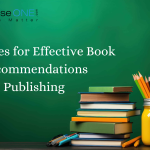
Leave a Reply Cancel reply
Your email address will not be published. Required fields are marked *
Save my name, email, and website in this browser for the next time I comment.
How to Write a Travelogue: 8 Tips To Write Better Travel Stories

As I wrote in a previous article , a travelogue is a truthful account of an individual’s experiences traveling, usually told in the past tense and in the first person. In that article, I focused on how travelogues compared to modern travel books. In this article, I will offer tips on how to write a captivating travelogue. You will learn how to avoid writing a traditional (and boring) “Dear Diary” travelogue and craft a modern and compelling travel story.
What does a travelogue contain?
A travelogue contains vivid descriptions of the place you’re traveling in, descriptions of the subjective experiences of visiting a place (your thoughts, blunders, fears), informed commentary about a place (its history and culture), and accounts of your interactions with local people. Above all, a travelogue must tell a story.
A travelogue is not academic writing, so you need not make a formal argument and present evidence—keep formal language at bay. A travelogue is not a write-up for a tourism board or a marketing agency, so don’t try to “sell” the destination to your readers. A travelogue is not a guidebook or a blog post, so you need not be helpful, list “the top 10 best restaurants,” or offer practical travel tips or suggestions.
Rather, a travelogue is a creative narrative of your experiences traveling.
Tell one specific story
Traditionally, travelogues were mundane accounts of what a person saw, did, and ate while traveling. But try to avoid giving a “Dear Diary” account of your travels. You will bore your readers if you write a step-by-step report of what you did, ate, and saw.
Instead, a travelogue will be more effective if it focuses on one interesting story from your travels. A destination is not a story. Neither is simply traveling from point A to point B.
Now that you’ve returned from your travels and want to write an essay or an article about your trip, review your notes and reflect on your experiences. Does a particular story stand out? Is there an experience that you can’t stop telling people about? Did you have a haunting, transformative, or enlightening experience? Did something bad or unexpected happen? If so, it might be a good candidate to write about.
Be descriptive
Now that you have your travel story in mind, think about the setting.
Details and descriptions are essential in travel writing. They will make your writing and story more vivid. What sounds, scents, tastes, and textures did you experience?
Give your readers a sense of what it is like to be there. Transport your reader to that specific time and place.
Be forthcoming
A travelogue is special because it gives us a glimpse of a foreign place, but it does so through the lens of the writer. We want to know your specific take on things.
We are all human. We all think, have opinions, and get scared. What did you feel? Did your experience stir up old memories? Were you frightened? Did you embarrass yourself? Was there a misunderstanding? What did you learn?
Be honest with your own flaws, biases, and assumptions. Give your reader subjective and emotional insight.
Be engaging
We travel (and read travel stories) to engage with and learn about other cultures. And our best travel stories almost always involve interactions with local people you’ve met.
So, while it is good that your reader gets a glimpse into the subjective world of the author, we will want to hear other voices in your story too.
What conversations did you have with the locals? Did anyone tell you something interesting, alarming, or enlightening? Who did you meet? Who were they? What did they look like? Did they have a particular manner of speaking? A distinctive feature?
Be informed
The point of a travelogue is to entertain, but sometimes it is good to inform. Sprinkle relevant information into your story.
Is there historical or cultural details that will help your reader understand why something is so? Did a local person reveal something interesting about the politics or history of a place?
How do you start a travelogue?
If a travelogue is a narrative account of your travels, then consider starting the travelogue with an inciting incident. Begin your travel story with something that will draw your reader in. Highlight a problem, conflict, struggle, or tension that will propel your story along.
As Seth Kugel says, the best travels stories are when things go wrong.
For example, you can begin your travelogue by stating your quest or mission, and then complicating that with an obstacle that gets in the way. Or, you can start with an intrigue, curious statement, declaration, or observation. You can start in media res , and then fill in the story later.
The trick is to hook your reader.
How do you end a travelogue?
Like any story, a memorable travelogue will offer a resolution. Consider ending your story with a transformation or a resolution, a return to the beginning, a moral, a message, or a revelation.
You want to give your reader a sense of closure, that the specific story has ended.
Tips to write a better travelogue
- Tell a specific story
- Describe the outer world using vivid descriptions
- Reveal the inner world (your thoughts, mistakes, missteps, blunders, excitements, etc.)
- Provide informed commentary (historical, political, cultural, etc.)
- Talk to locals and describe your interactions with them
- Use a conversational tone and avoid fancy/big words, marketing jargon, and guidebook speak
- Begin with an intrigue, something going wrong, or a compelling or captivating moment
- End with a resolution, a moral, a message, or a revelation
Do you have any other tips on how to write a better travelogue?
Last Updated on 29 November 2020 by Travel Writing World
Share this:
- Click to share on Twitter (Opens in new window)
- Click to share on Facebook (Opens in new window)
- Click to share on WhatsApp (Opens in new window)
- Click to share on Pinterest (Opens in new window)
- Click to share on Tumblr (Opens in new window)
- Click to share on Reddit (Opens in new window)
- Click to print (Opens in new window)
- Click to email a link to a friend (Opens in new window)
- Click to share on LinkedIn (Opens in new window)
- Click to share on Pocket (Opens in new window)
- Click to share on Telegram (Opens in new window)

Travel Writing World
With an emphasis on travel books and long-form travel literature, host Jeremy Bassetti talks with the world’s most inspiring travel writers about their work and about the business and craft of travel writing in this award-winning podcast and website. In addition to the podcast, the site also features travel writer profiles, book reviews, and articles.
You may also like
38 types of articles for travel blogs, note-taking for travel writers, travel journalists, and travel..., distance in travel writing, evernote for writers, journalists, and bloggers, what is a travelogue, the 30 best travel books about spain.
What I want to know is how to write your thoughts? In Italics so the readers knows that’s your thoughts or constantly writing “I remember thinking…” “I thought to myself”. I prefer just writing my thoughts as italics but is this the accepted way? Will an editor hate it and want me to rewrite is what I’m asking.
You’re talking about “internal dialog.” Do a google search to see what others think, but here is my take. Italics and quotes are both accepted forms. There is also a third way: don’t use italics, quotes, or thought/dialog tags at all. While this depends on the point of view of the work, I’m assuming that that you’re writing in the first-person present or past if you’re writing a travelogue. Why not use italics, quotation marks, or tags if you’re writing in the first-person? It will be implied that the narrator who says “I” or “me” is the one doing the thinking. So, instead of writing Why did the man steal my purse , I thought… You could simply write: Why did the man steal my purse? as it will be implied that the narrator is the one having the thought.
Just finished my travelogue book
Great. What is it about?
Just starting up and very much enjoyed this article.
Leave a Comment Cancel Reply
Save my name, email, and website in this browser for the next time I comment.
Notify me of follow-up comments by email.
This site uses Akismet to reduce spam. Learn how your comment data is processed .
This website uses cookies to improve your experience. We'll assume you're ok with this, but you can opt-out if you wish. Accept Read More
What is Travel Writing?
For thousands of years, travellers have written about their experiences exploring the furthest reaches of the world, both to record their journeys for personal reasons and as a guide for those who might follow.
Before the internet age, even as far back as Ancient Greece, stories of distant lands were popular because many people would never have had an opportunity to visit themselves.
But what is travel writing like today? With the internet, sharing experiences of our travels has never before been so easy, and arguably travel writing in one form or another is more popular ever.
Definition of travel writing
Travel writing is a genre that describes a writer’s experiences, observations, and feelings while travelling to different places.
It often includes descriptions of the landscape, culture, people, and events that the writer encounters, as well as their personal thoughts and reflections on these experiences.

Sonnets are one of the most popular forms of poetry, and they have been for hundreds of years. The strict format and short length make…
How Many Pages is 3,000 Words?

On average, 3,000 words is equivalent to 6 pages of A4 single-spaced or 12 pages if double-spaced. This takes into account a font size of…
How Long Does it Take to Write a 3,000 Words Essay?

Writing an essay and completing it before a deadline is an important skill for any student, but even those experienced in time management might find…
Leave a Comment Cancel Reply
Your email address will not be published. Required fields are marked *
Save my name, email, and website in this browser for the next time I comment.
IB Language and Literature 2.0
Group 1 english higher and standard level, faraway places: travel writing.
“Is it lack of imagination that makes us come to imagined places, not just stay at home?” Elizabeth Bishop, poet (1911–1979)
In this section you’ll come to understand the conventions of travel writing , learn a bit about the history of the genre, question why people are compelled to travel – and to write about it – and investigate the overlap between language and literature that exists in the wide and varied genre of travel writing. You’ll read non-fiction texts that feel like stories and see imaginary scenes presented as fact. You’ll learn to decode elements of travel writing and question texts more closely, finding analysis points and learning to evaluate various pieces of writing. These kinds of skills underpin your success in Paper 1 at the end of your course. Begin your study by reading The Travel Narrative from the list of articles below, and then choose one or two more pieces of wider reading to enrich your study:
- The Travel Narrative (IB Textbook)
- A Short History of Travel Writing (Traveltester article)
Reading Challenge
This is a longer and more challenging piece of reading, but spending time on this piece, and discussing it with your teacher, will help you master this topic:
- The Elasticity of Place (an interview with a travel writer)
Class Activit y 1: why do we travel?
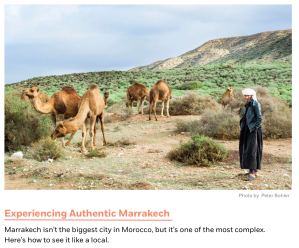
As you will have learned by now, people travel – and write about the places they visit – for a variety of reasons. the most common are:
- to find the self
- curiosity about the ‘other’
- religious or spiritual reasons;
- to search for one’s roots;
- to be informed
- to experience ‘awe’
In this activity, you’ll practice identifying these purposes in travel writing. Visit Travel Tales, a collection of stories and articles curated and edited by Lavinia Spalding. Slowly scroll down the home page of her site, reading the titles and blurbs of the various stories you find there. Can you infer the purpose of travel from these snippets of information? Refer to The Travel Narrative (above) for more information of the purposes of travel writing.
Class Activity 2: seven travel stories
The travel genre is wide and varied – and this small collection of travel stories will give you a little taste of some famous (and not-so-famous) writers’ work. You may recognise one or two of these names, such as Bram Stoker and Bill Bryson.
Inside the booklet you’ll find seven short travel tales: either read them yourself, or divide them amongst the people in your class. Use this powerpoint to record your observations about the genre of travel writing. However many extracts you attempt, feed back what you’ve done to the rest of the class.
Areas of Exploration Guiding Conceptual Question
‘Cultural practices’ refers to traditional or customary practices of a particular ethnic, national or cultural group. They can be considered in the same way as symbolism in literary texts; physical manifestations of abstract beliefs and values . One reason we travel is to discover the beliefs and values of different people, as practiced in rites and traditions which have often been passed down from generation to generation. Before you work through the resource below, can you think of any practices that are special in your culture? These may include religious, medical, artistic, culinary, political, family or any other behaviour that reveals underlying beliefs and values:
- H ow do texts reflect, represent or form a part of cultural practices?
Discussion Points
After you’ve got your head around the material in this section, pair up, pick a question, spend five minutes thinking and noting down your thoughts – then discuss your ideas with a friend and report back to the class:
- Why is travel writing important? How is it different from other kinds of journalism?
- In the twenty-first century, is travel writing still necessary? Given that technology can connect us with people and places all around the world, and we can watch videos, read blogs, and browse the social media of people who live in other places, what is the point of reading first person accounts of travel by outsiders to those places?
- Is there a difference between a traveller and a tourist? What makes a person one rather than the other? Is it preferable to be one over the other?
Learner Portfolio
Watch Livinia Spalding’s Tedtalk (above) and, if you have not done so already, visit Travel Tales to browse some of the stories from her collection. Near the end of this talk Lavinia issues a challenge: to write your own literary travel story, inspired by a place you’ve been or a person you’ve met on a journey you have taken. Take her up on this challenge by writing a piece of literary non-fiction about a place you have been ora journey you have taken in your life. Make the purpose of your writing clear: is it to find the self; discover the ‘other’; become informed; search for your roots; take a religious or spiritual journey, experience ‘awe’ – or some combination of purposes?
Paper 1 Text Type Focus: travel writing
At the end of your course you will be asked to analyze unseen texts (1 at Standard Level and 2 at Higher Level) in an examination. You will be given a guiding question that will focus your attention on formal or stylistic elements of the text(s), and help you decode the text(s)’ purpose(s). Travel writing is an extremely fluid genre and you could be presented with a text that contains a variety of tropes (such as maps, photographs, itineraries, reported or direct speech, humour, metaphors… the list goes on) and may even share similarities with literary texts. Use these practice texts to familiarise yourself with the different features of Travel Writing and add them to your Learner Portfolio; you will want to revise text types thoroughly before your Paper 1 exam. You can find more information – including text type features and sample Paper 1 analysis – by visiting 20/20 . Read through one or two of the exemplars, then choose a new paper and have a go at writing your own Paper 1 analysis response:
- A Fish with Hair
- The Mangyan of Mindanao
- Enter Tasmania’s Labyrinth ( Past Paper)
- Cycling Tips (Past Paper)
- Taj Mahal (Past Paper)
- Long Enough in Jo’burg (Past Paper)
- Travel Tales (Past Paper)
- Hunting Moose (Past Paper)
Key features of travel writing
- Viewpoint: travel writing often documents the personal experiences of someone exploring a new place or country so is often first person.
- Perspective: an outsider’s perspective is common when reading travel writing, particularly if the destination is new, exotic or remote. Alternatively, the piece might be written from an insider’s perspective and is inviting you to visit or share an experience in a different part of the world.
- Structure: look out for chronological timelines, past – present structures or a linear journey of discovery. Guidebooks will have clear headings and subheadings and will probably include box-outs and the like.
- Information: travel writing often seeks to be informative and can present you with facts and figures, names and dates, historical or architectural or geographical information and more.
- Description: if the writer is trying to make the destination tantalising, or to help transport the reader, you might find examples of visual imagery, vivid description , even figurative comparisons , helping you visualise a far-off place.
- Visuals: photographs, maps , or floor plans of famous locations are all visual features that you might encounter in travel writing, particularly guidebooks.
Body of Work: Alison Wright Photography
Alison Wright is an author, photographer and speaker who has published several collections of photo-essays including Faces of Hope: Children of a Changing World and The Spirit of Tibet: Portrait of a Culture. Her most recent collection from 2018 is titled Human Tribe . Her mission is to document endangered cultures and traditions from around the world, including raising awareness of human rights and other issues. Alison has won numerous awards and accolades including the Dorothea Lange Award in Documentary Photography for her photographs of child labor in Asia and a two-time winner of the Lowell Thomas Travel Journalism Award. She was named a National Geographic Traveler of the Year in 2013. Here is a small selection of her photography to use in class, or you can explore Alison’s complete body of work here .
The presentation of beliefs and values through images is a powerful tool that can help preserve minority cultures in the face of globalisation and help to balance historical injustice by educating those who have lost touch with the past or with alternative ways of living. Texts of all kinds – written, spoken, visual – can help protect cultural heritage that might otherwise be lost. Alison Wright’s work can be seen in the wider context of cultural preservation , an important global issue in our increasingly homogenised and globalised world.
Towards Assessment: Individual Oral
“Supported by an extract from one non-literary text and one from a literary work, students will offer a prepared response of 10 minutes, followed by 5 minutes of questions by the teacher, to the following prompt: Examine the ways in which the global issue of your choice is presented through the content and form of two of the texts that you have studied. (40 marks) “
Alison Wright’s photography would make a good text to consider using in your Individual Oral. Here are two suggestions as to how you might use this Body of Work to create a Global Issue. You can use one of these ideas, or develop your own. You should always be mindful of your own ideas and class discussions and follow the direction of your own thoughts, discussions and programme of study when devising your assessment tasks:
- Field of Inquiry: Culture, Identity and Community
- Global Issue: Cultural Preservation
Though the colonial era has passed, its legacy lives on in the education systems, laws, political systems and other cultural practices that have displaced indigenous traditions and beliefs. In this context, the reassertion of minority cultures through texts is a powerful tool that can help balance out historical injustices and educate those who have lost touch with alternative ways of life. You could easily pair her work with any literary text that reveals aspects of culture, describes cultural practices, or reflects cultural beliefs and concerns.
- Field of Inquiry: Beliefs, Values and Education
- Global Issue: Encountering the ‘Other’
An important purpose of travel writing is for us to encounter ‘other’ people and make connections with people who may be very different to ourselves. In a world of suspicion and insularity, it is through building bridges between cultures and learning to understand different ways of life that we can settle our differences peaceably. In this context, Alison Wright’s photography invites us to ‘meet’ individuals from cultures that are very different to the urbanised or westernised cultures a lot of us may be more familiar with.
Sample Individual Oral Here is a recording of the first ten minutes of an individual oral for you to listen to. You can discuss the strengths and weaknesses of this talk as a way of improving your own oral presentations. Be mindful of academic honesty when constructing your own oral talk. To avoid plagiarism you can: talk about a different global issue; pair Alison Wright’s photography with a different literary work; select different passages to bring into your talk; develop an original thesis.
Possible Literary pAirings
- Broken April by Ismail Kadare – you might like to consider the idea that some cultural traditions are worth preserving, while others should rightly be consigned to the dustbin of history and Kadare subtly implies the Kanun is a dying tradition.
- John Keats’ poetry – In Ode on a Grecian Urn , the speaker tries to imagine what life might have been like for the people engraved on the surface of an urn.
- Pygmalion by George Bernard Shaw – the play is awash with peculiar Victorian mores revealing all kinds of beliefs and attitudes about class, poverty, prudery, morality and more. Doolittle’s speeches, Mrs Higgins’ at-home or conversations between Higgins, Pickering and Mrs Pearce could all be passages that you might like to select for this activity.
- Border Town by Shen Congwen – written just as China was beginning to modernise, and recently rediscovered by a new generation of Chinese readers, Congwen’s novella paints a picture of the lives and traditions of local Miao people in West Hunan, and can be valued as a record of a way of life that has largely disappeared in one of the world’s fastest-changing countries.
- The Elephant Vanishes by Haruki Murakami – these stories are set in a world traumatised by history, and most of the characters are victims of a peculiar kind of ‘collective amnesia’. They seem stuck in the present and can’t move on in their lives. Some critics have interpreted Murakami’s writing as a response to the tumultuous events of Japan’s history – a past that many would like to simply forget. Approaching this activity from this unusual angle would be a challenging, but possibly very interesting, way to pair a literary and non-literary body of work.
- Charlotte Mew’s poetry – writing at the start of the twentieth century, what does Charlotte Mew reveal about the lives, attitudes and values of the people in her poems? What kind of society did she live in? What was life like for ordinary people – and for women, disabled people and those who were mentally impaired?
- Waiting for the Barbarians by J.M. Coetzee – the ‘civilised’ world’s encounter with the fearsome ‘other’ is a major theme of Coetzee’s novel and could make an ideal piece with which to compare Alison Wright’s photography.
Towards Assessment: HL Essay
Students submit an essay on one non-literary text or a collection of non-literary texts by one same author, or a literary text or work studied during the course. The essay must be 1,200-1,500 words in length. (20 marks) .
If you are an HL student who enjoyed this section of work, and find the topic of travel writing interesting, you might consider this Body of Work to write your Higher Level Essay. You could extend your research beyond Human Tribe to include some of her other published collections. Angles of investigation might include: to what extent you think she is successful in her aim of bridging the gap between different cultures; whether her photography constitutes a modern form of travel writing; to what extent her photography reveals and represents cultural practices; whether you feel the photographs form or impose an identity onto people from an outsider’s perspective. Here are some suggestions for you – but always follow your own lines of inquiry should your thoughts lead you in a different direction:
- How is colour and composition used to present ideas about identity in Alison Wright’s photography?
- How does Alison Wright imply a close connection between people and the natural world in her photography collections?
- How does Alison Wright use metonymy in her photographic work?
- Explore the symbolism of eyes in Alison Wright’s photographic collections.
- In what ways does Alison Wright’s photography meaningfully negotiate our encounter with unfamiliar people and places?
Wider Reading and Research
- Outpost Magazine – a Canadian adventure-travel publication published six times a year, Outpost is known for its long-form adventure narratives from across the world.
- My Favourite Travel Book – six famous travel writers nominate their favourite travel books.
- The Most Inspiring Talks on Travel – a selection of the best Tedtalks about travel, including Lavinia Spalding’s talk.
- The Truth About Tribal Tourism – visit this Rough Guide blog to discover how your sustainable tour may not be as friendly to people or places as you might have thought…
Share this:
Categories: Time and Space
Leave a comment Cancel reply

- Already have a WordPress.com account? Log in now.
- Subscribe Subscribed
- Copy shortlink
- Report this content
- View post in Reader
- Manage subscriptions
- Collapse this bar

22 Tips for Writing a Travelogue- The Ultimate Guide
- March 11, 2024
- No Comments
What is a travelogue?
A travelogue is a piece of travel writing that is essentially about giving readers a sense of place in a way that is engaging, unique, hopefully humorous and ideally, inspiring. It’s a useful way of capturing details and observations of your own travels for your own memories or to share with others.
How do you write one?
A travelogue is like other non-fiction writing in that it uses fact, but unlike writing journalistic pieces for newspapers, for example, it relies on literary devices to make it more attractive to its readers. It can also involve and challenge your powers of observation in a different way to other forms of article or feature writing. Being aware of small details is often the way into a gripping travel article.

What goes into writing a travelogue?
Your aim as a writer is to transport the reader to that place you visited using enriching language and descriptive detail, characters, dialogue and anecdotes to convey a sense of the author’s experience on that trip. So, if you want to learn how to do that, check out the top tips in our ultimate guide below:
- Do Your Research
If you work as a content writer, you may not actually go on a trip, but you need to ensure your research in writing about a place is excellent. If you are going on a trip, and plan to write about it, doing your research is important because, when you go on the trip, a lot happens that might be out-of-the-box and you’ll be in a better place to say “Yes” to something unusual that you didn’t come across in your research and therefore, might be a rare gem. Good research adds to your credibility and makes your narrative more engaging.
{Read our interesting blog post by a teenager on Why Fiction matters }
- Keep A Journal
Some writers walk around with a tiny booklet in their pocket or a diary in their handbag where they can jot down quick notes. This can be distracting and take away from actually enjoying your travel tour, but you can steal a few moments at the end of the day to jot down your notes. However, do note that the longer you leave it to make your notes and capture your observations, the more likely it is that you will forget and lose vital details and observations.
- Travelogue Structure
Your travelogue will have a beginning or introduction, a middle and an end. These are the basic building blocks of any kind of a story, including a travel story. The beginning should introduce readers clearly to what you’re going to be talking about, also known as the ‘hook’ or angle of the piece. The middle includes all the content you want to talk about with respect to your travels. This is where you will employ a successful narrative strategy that establishes the pace, style, voice, tone and atmosphere of your story. You may choose a chronological timeline and include characters and dialogue to bring your story alive to the reader. The ending should slowly bring readers to a sense of closure and you mustn’t forget to mention the ‘hook’ again. Tell readers what you’re going to tell them, tell them and then tell them what you told them. This is also known as the Aristotelian triptych and should be your mantra for how to structure a travelogue

- How To Introduce Your Story
An eye-grabbing title, is a good start. Ensure the title matches the content of your piece and doesn’t feel forced or is just click-bait so that you get more views online. Begin your story by creating a compelling hook and writing an attention-grabbing introduction. Don’t start your travelogue with boring and unnecessary details. The reader doesn’t need to know when and where you booked your flight unless your article is about where to book cheap flights or get top deals for example. Instead, plunge us directly into your experience keeping in mind that it doesn’t have to be chronological, as long as it’s engaging.
- Choose Your POV Wisely
The point of view you choose for your travelogue will affect the way readers respond emotionally to your writing, your characters and their actions. Your choice of point of view will also influence other elements of your travel piece such as the tone of the story. Travelogue is most commonly written either in the first person point of view (POV) or the third person POV. The advantage of writing it in the first person is that you bring the reader much closer to the story you’re telling. They can almost experience everything you are experiencing. The third person POV creates a bit more distance between you as the storyteller and therefore, the reader, and the story being told.
{Looking to brush up your skills? Here is a list of Top writing courses in India .}
- Personalise It
Along with using the first person point of view, infusing your narrative with some deeply personal insight, whether this is a personal anecdote or something nostalgic from your past, can really help a reader connect more deeply with your writing. For example, you might write a story about eating croissants in Paris, but if you relate that to your first childhood trip to France and your first experience of taking in the scent of French bakeries, your readers will be more likely to keep reading and search for more of your writing online or on the shop shelves.
Locating yourself as the writer can be another useful way of getting the reader to engage with your writing. For example, dropping in a line or two telling us that it’s your first time skiing and that’s why your trip to a ski resort was particularly exciting for you, makes for interesting reading. Similarly, telling us why your favourite place (that you’re visiting and writing about) is your favourite can draw us in to want to read more.

- Consistent Tenses
Even the most established writers make the mistake of switching tenses in the middle of their sentences and paragraphs. They might begin in the past tense and then suddenly switch to present tense or vice-versa. This really disrupts narrative flow so ensure that you are consistent with your tenses to make it easier for the reader to follow your story. People use the present tense when they want to bring the experience or trip that they’re describing more alive to the reader. This sort of writing gained popularity with a lot of travel blogging over the internet, for example. Writing in the past tense is much more liberating, however, as you get to write about the trip after events happened and it’s easier for you to relate what happened, albeit in the most engaging way possible. Whichever tense you choose, make sure it’s consistent.
- Conjure up an atmosphere
Your choice of words and style will set the tone for your piece. For example, writing about the five most haunted villages in Croatia, for example, could be more engaging if you slip in words like jagged, misty, sharp-edged, mysterious or shadowy. Choosing language carefully and focusing on your settings and backgrounds as you unravel your travelogue, can really increase the interest of the reader, if you get the balance right.
{It is never too late to start writing. Here is a list of Authors who debuted late in life to inspire you.}
- Drop the Cliches
It’s important to read other authors who write in the genre you want to write in because you’ll soon spot the words and phrases people use repeatedly to the point where their power dissipates on the page. For example, everybody uses ‘quaint’ or ‘cosy’ to describe a warm, small and welcoming environment. Writing that something is a ‘best-kept secret’ is also pretty common. Cliches have a way of creeping into our writing. It’s challenging, after all, to look for a fresh way of saying the same thing. When editing, look out for cliched language and ask yourself if there’s a better way of expressing what you want to say. Try to make your words and descriptions your own.
- Include Characters
One of the most common mistakes writers make is ignoring people from their travelogues. Characters can really illuminate a place and enliven a story. If you aren’t meeting or interacting with people during your travels, then not only are you not enjoying a full travel experience, but you’re also going to have a very boring piece of writing on the page. Your interactions with people can provide relevant anecdotes to add a lot of colour to your stories. Travel isn’t just about the sights around you, it’s just as much about the people who are a vital part of the culture you are experiencing when you travel. Your readers want to experience the place through your eyes and what better way than through your interactions with the people living there?
- Integrate Dialogue
Dialogue can really bring a story to life and humanise it. Injecting characters into your travelogue can bring warmth and resonance to your narrative and really draw the reader in more effectively. Everyone is looking for that bit of human contact and the inclusion of characters can do this. Including relevant conversations, quotable quotes and snippets of conversation can really liven up a relatively flat piece of writing just through integrating your exchanges in the form of dialogue in the narrative. When you’re reviewing your piece, if it feels a bit flat, you may find that what it needs is just a bit of dialogue to spruce it up.

- Show, don’t Tell
Every writing class covers this little maxim. If you’ve ever heard it and wondered what it means, it’s a reminder not to tell us what you or your characters are feeling, but show it. Don’t just relate to us what is happening in a long, dry monotone, but show us through illumination by dialogue exchanges or interactions. Let the reader draw the conclusions. For example, if you want to convey that a character in your travel story was angry, don’t tell us, but show us what the character was doing in anger. Similarly, don’t tell us you were moved by a landscape, but show us and let us be moved by it through your descriptions instead. Dialogue can be a great way of ‘showing’ through verbal exchanges, by the way.
- Engage the Senses
You’ll notice that most travel writers lean heavily on visual descriptions to attract readers. They forget that there are four other senses they can use to immediately elevate their writing. A quick way of getting readers to connect with your writing is to engage at least two or three of their senses through your writing. The five senses you have to work with are Sight, Smell, Sound, Taste and Touch. Use them. For example, instead of saying, ‘The flowers were blooming,’ you could say, ‘The wine-red roses were blooming and their intoxicating scent was in every corner of the shop.’ You’ve activated two of the readers senses here: Sight and Smell. One top tip is to not use all senses too close together otherwise they will overwhelm the reader. The trick is to spread them out and create a nice balance.
{Are you an author looking to get reviews for your book on amazon? Read this article first The story behind Amazon Reviews in India }
- Specificity works
The more specific you are about something in your description, the better it is. Instead of saying, ‘The bird on the tree,’ it’s stronger if you say ‘The jet-black crow on the tree.’ Instead of saying, ‘It is a pretty bouquet of flowers,’ it’s stronger if you say, ‘It is a pretty bouquet of roses.’ Instead of saying ‘He walked over the footpath’ you could say ‘ He walked over the laterite stone footpath. This sharpens the visual descriptions in people’s minds and makes them want to read more. Similarly, refrain from using blanket adjectives like saying the sea was amazing , or the beach was beautiful or the sunset was mesmerizing . Drill down one more level and say what was amazing, beautiful or mesmering about these things.
- Inject Humour
Humour isn’t everyone’s forte, so don’t force it if it isn’t yours either. But, touches of humour, here and there can really enliven your story, especially if you include humorous pieces of dialogue, anecdotes or amusing characters, events or exchanges during your journey. The way you present a miserable experience, if done with appropriate humour, could nevertheless stir up a giggle or two in your reader and lighten the moment.
- Spice up your narrative
Using innovative things like journal entries, photographic images, captions from interesting signage, quirky exchanges or dropping in references to popular culture can really make your writing pop on the page, if handled well.
- Accuracy
Always include practical advice and tips which travellers will find interesting. If you do your research correctly, you’ll know what tid-bits to include to really get them engaged with your writing. Don’t skimp on research and accuracy. There’s nothing that turns off readers like inaccuracy if they discover it. You want to come across as credible and be known for your accuracy, as well as your writing style and voice. You may even become their go-to for practical and useful travel tips before every journey.
- Pacing
What kind of pace do you want your writing to have? Do you want it to appear rushed and breathless? Or, slow and measured? The pace should fit the tone of your piece and, as the author, remember that you have control over the pacing. You might be describing a visit to a horse race-track and describe details that happen quickly, but slowing down the pace before the moment the starter gun goes off, and after the horses cross the finish line will create more balance in your story. Pacing is controlled through your choice of words and how quickly or gradually you transition from one visual description or sentence to another.
{We have a few tips for you on Writing Feature Articles }
- Voice for your Travelogue
Make your travel piece sound like a reflection of your personality. Making it sound human and not clinical or harsh or sterile, can really make your piece more readable. You want your reader to connect with you as a human, so sounding warm and gentle can draw readers in more than a jarring, critical sounding voice. Your voice can sound adventurous, welcoming, humorous, joyous or playful, reflecting aspects of your own personality.

- Don’t overwhelm
One of the biggest mistakes beginner writers make is thinking that they have to use fancy language and big words to write impressive articles and draw in the readers. The truth is that if you write using langauge you don’t normally use or aren’t very familiar with, the reader will feel your discomfort on the page and it might turn them off. Handling simple language in fresh, innovative ways is more effective, in that instance. Also, don’t use overflowery language or gush. That can be off-putting too. For example, just say ,’The profusion of bougainvillea pouring over the boundary wall made me think of home,’ instead of saying, ‘The overabundance of magenta and fuschia blossoms with their tender green tendrils pouring over the white-washed, ancient boundary wall made me feel nostalgic for that familiar place where I live with my pater and mater.’ The second sentence is more dense and some brief editing will quicken the pace up as well, making for lighter narrative that nevertheless gives readers a good picture of what’s being described and, in this instance, remove any trace of pretentiousness.
- Edit, edit, edit
Always consider whatever you’ve written as a first draft. It’s only in the refining that you’ll uncover gold. The best writing always reads effortlessly, that’s how you know a lot of craft and editing went into it, to make it appear seamless. My top tip for editing would be for you to voice-record yourself reading your writing, and then playing it back. You’ll hear the errors and sticking points that require edits. Also, avoid repetition of words, phrases and ideas too close together. A thesaurus is your best friend in cases like this.
{Check out this blogpost on Using analogies: Metaphor and Similes in Indian writing to make your writing stand out.}
So, there you have it. These are some top tips to take your readers on the journey of a lifetime with you. Happy writing!

Jessica Faleiro has an MA in Creative Writing from Kingston University, UK. She is an alumna of the University of East Anglia International Creative Writing Workshop (2020) and the Helter Skelter Writing Residency (2021). Jessica’s travel writing has been published in the Times of India, Forbes magazine, Skyscanner, Coldnoon, the Joao Roque Literary Journal and others. She lives in Goa, where she also runs writing workshops. Jessica Faleiro’s work has been published in various anthologies, journals and magazines including Asia Literary Review, Indian Quarterly, Himal Southasian, Bengaluru Review and Mascara Literary Review . Her debut novel Afterlife: Ghost stories from Goa (2012) was followed by The Delicate Balance of Little Lives (2018). Jessica was the Commissioning editor for the Joao Roque Literary Journal for three years. Insta handle : @jessica.faleiro76
Related posts:
Recent posts.
- 12 Best Books by Sudha Murty
- 5 Best Books by Amitava Ghosh
- 10 Best Books by Anita Desai
- The Seven Steps of Self Editing Fiction
- 10 Indian Short-Stories Translated to English
Leave a Reply Cancel reply
Your email address will not be published. Required fields are marked *
This site uses Akismet to reduce spam. Learn how your comment data is processed .
- Workshops/Retreats
- Physical Workshops/Courses
- International Writer's Retreat
- Online Courses
- Custom Workshops
- Support for Writers
- First Draft Club
- Himalayan Book Club
- Destination Book Launch
- French Residency
- Writing Coach
- Stay with Us
- Rooms/Tariffs
- Writing Spaces
- Getting here
- Traveller Safety
- HWR Books & Awards
- In the Media
- Community Impact
( 11am - 5pm )
Email: [email protected]
- Privacy Policy
- Copyright © 2022 The Himalayan Writing Retreat

Mastering the Art of Travel Writing: Tips for Students
D o you love writing and traveling? Do you dream about seeing the world and discovering hidden gems in every country you go to? Then you might have considered becoming a travel writer. Even though this is one of the dream jobs many students have, it comes with challenges too. Mastering the art of travel writing is not hard, but you have to put in a lot of dedication, effort, and time. This is a captivating genre that allows you to share your experiences, observations, and adventures from your journey. Writing about travel is what you, as a student, might aspire to.
So, you are probably looking for some tips and tricks on how to get started. What is travel writing? Are there more types of travel writing? Learn more about some travel writing tips that can enhance your craft and help you create engaging stories. While some spots can inspire you to write fascinating posts, you can take matters into your own hands and improve your skill.
Immerse Yourself in Traveling
Well, you cannot be a travel writer if you are not traveling. This is why it is essential to travel extensively. Explore distinct places , cultures, and landscapes. Get to know the locals, talk with them and find out more about the local traditions and social norms. Every country is different from another one. And even though some beliefs or lifestyles might be similar, there are so many things that tell them apart. And you can learn more about this by traveling and talking with locals too.
However, as a student, you have academic responsibilities too. Getting an education in school is not only about attending classes or what notes you take during teaching but about writing essays and assignments too. And traveling around the world is time-consuming, which might make you fall behind your deadlines. Thankfully, there are essay writers for hire, essay writers that are skilled and professional and can help you complete your assignments. Getting some much-needed help will help you follow your passion and travel around the world. This way, you will gather experiences you can write about.
Maintain a Travel Journal
To write a travel short story or an article for your blog, you need to travel. But you also need to observe the peculiarities of every place you go to. You may not have time every day to write an article, but there is a solution. You could maintain a travel journal. Have it with you everywhere you go.
Write down your thoughts, impressions, and experiences while they are still fresh in your mind. This way, you make sure you do not forget anything worth mentioning. When you will sit down and write your articles later, this journal will be an invaluable resource.
Take Photos
If you want to become a travel writer, you have to write, of course. But photos can add more value to your travel stories or articles. So, whenever you can, aim to capture high-quality photos . Learn more about the art of photography to complement your words with images.
Read Widely
Besides practicing the art of writing more and traveling around the world, you could hone these skills by reading too. It is known that reading helps you expand your vocabulary as you learn new words that will help you convey the message effectively.
But, reading what other travel writers have published will help you learn more about writing techniques. How do they tell a story? How do they hook you and capture your attention? Reading widely does not mean that you will end up copying others. It just serves as a source of inspiration that will help you develop your unique voice.
Honesty and Authenticity
Many students who are aspiring to become travel writers think that they only have to share positive experiences from their travels. Indeed, when you discover new places and cultures, everything you see might be through some pink lens.
However, readers appreciate honesty and authenticity. So, help them see your experience through your eyes. Do not be afraid to share the parts of the trip that were not as pleasant. This will help them have a clear idea of what to expect from specific places. They are looking for genuine insights.
What to Keep in Mind?
Writing about traveling and trips around the world is an art. To excel in this craft, not only do you need to improve your writing skills, but also gain as much traveling experience as you can. For those who might not have the time or expertise, there are paper writers for hire who specialize in travel content. However, do not forget that travel writing is a journey in itself. Embrace the process, keep practicing, and let your passion for exploration and storytelling shine through your words.
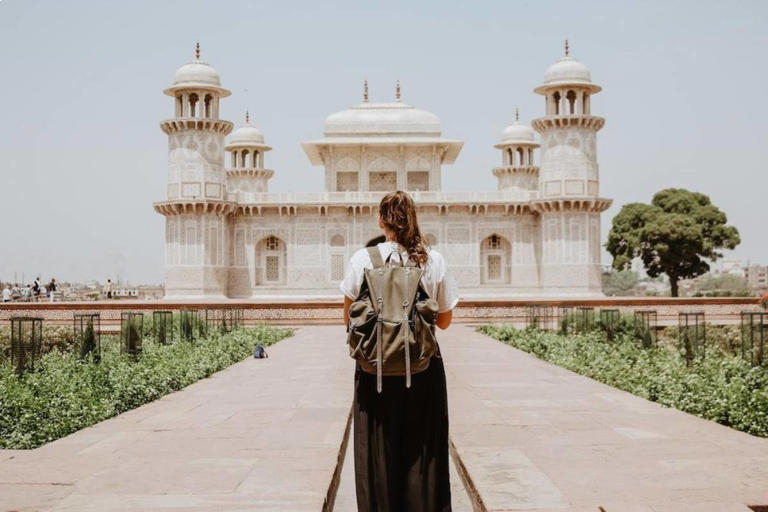

COMMENTS
Tips for travel writing. Open with a compelling and snappy anecdote or description to hook the reader's interest from the beginning. Give the reader a strong sense of where you are through vivid language. Ground the reader in time, in climate, and in the season. Introduce yourself to help the reader identify with you and explain the reason ...
Travel writing in guidebooks is straightforward, informative, and fact-filled. In addition, there's a certain amount of responsibility that comes with the job. ... Pathos is a literary device that uses language to evoke an emotional response, typically to connect readers with the characters in a story. Read post
Rule 2: Keep Track of Everything as You Travel. Being a travel writer is all about observation. As you move through the world, you do your best to capture the sights, sounds, smells, and feel of a destination so that a reader on the other side of the planet can be transported to, say, the streets of Vietnam.
Richard Nordquist. Updated on July 03, 2019. Travel writing is a form of creative nonfiction in which the narrator's encounters with foreign places serve as the dominant subject. Also called travel literature . "All travel writing—because it is writing—is made in the sense of being constructed, says Peter Hulme, "but travel writing cannot ...
Travel writing, one may argue, is the most socially important of all literary genres. It records our temporal and spatial progress. It throws light on how we define ourselves and on how we identify others. Its construction of our sense of 'me' and 'you', 'us' and 'them', operates on individual and national levels and in the ...
Record your interviews or take notes to ensure you don't forget anything and have quotes to use for when you write your story. And, of course, ask permission before you conduct the interview or use the material. With your notes and quotes in order, you then need to do the hard part: figure out what's relevant.
'The Cambridge Introduction to Travel Writing impresses through its historical and thematic scope and the wide range of texts it covers as well as its discussion of the issues that preoccupy the field in the twenty-first century.' ... Elizabeth A. Women Travel Writers and the Language of Aesthetics, 1716-1818. Cambridge: Cambridge University ...
That book showed me how writing could travel through time as much as through a landscape, weaving history, nature, social observation and quirky humour into one compelling narrative; an excellent example for anyone hoping to one day produce a great travel tome of their own. You can hear more insights from all of these authors and many more at ...
Teaches the Art of the Short Story. Teaches Storytelling and Humor. Teaches Writing for Television. Teaches Screenwriting. Teaches Fiction and Storytelling. Teaches Storytelling and Writing. Teaches Creating Outside the Lines. Teaches Writing for Social Change. Teaches Fiction, Memory, and Imagination.
11 Great Travel Writing Examples. Writing with feeling, tone, and point of view creates a compelling story. Below are examples of travel writing that include; first paragraphs, middle paragraphs, and final paragraphs for both travel articles as well as travel books. I hope the below examples of travel writing inspire you to write more, study ...
Becoming a full-time travel writer requires dedication, skill-building, and strategic steps. Start by honing your writing skills through practise and feedback. Create a professional online portfolio showcasing your travel writing. Pitch your work to travel magazines, blogs, and websites to gain exposure and build a portfolio.
Besides, travel writing is a form of creative nonfiction in which the narrator's encounters with foreign places serve as the dominant subject. It is also called travel literature or tourism writing. Travel writing has a way of transporting the reader to new places. When done well, it can inspire others to explore, experience new things, and ...
The aim of literary travel writing is to entertain. Readers consume it "for pleasure, and for its aesthetic merits," Thompson notes, instead of for practical insight. Literary travel writing can take the shape of books, novels, memoirs, articles, poems, journals and diaries, journalism, personal essays, travelogues, op-eds, blog posts, and ...
Learn what a travel article is, the different purposes and audiences of travel writing and the conventions of travel articles with this guide from BBC Bitesize KS3 English.
Tips to write a better travelogue. Tell a specific story. Describe the outer world using vivid descriptions. Reveal the inner world (your thoughts, mistakes, missteps, blunders, excitements, etc.) Provide informed commentary (historical, political, cultural, etc.) Talk to locals and describe your interactions with them.
Travel writing is a genre of writing that captures the essence of a place and its culture, through the eyes of the writer. It's a blend of journalism, storytelling, and personal reflection that provides readers with an immersive experience of the destination. Whether it's a guidebook, an essay, or a memoir, travel writing offers a unique ...
The writing is tightly trimmed and polished. Their experience permits them the luxury of digression, dialogue, reminiscence, and musing. Expand your personal library and include travel narratives from great writers—Henry James, Mark Twain, Edith Wharton, Gustave Flaubert, Ernest Hemingway, Virginia Woolf.
Use these practice texts to familiarise yourself with the different features of Travel Writing and add them to your Learner Portfolio; you will want to revise text types thoroughly before your Paper 1 exam. You can find more information - including text type features and sample Paper 1 analysis - by visiting 20/20.
An eye-grabbing title, is a good start. Ensure the title matches the content of your piece and doesn't feel forced or is just click-bait so that you get more views online. Begin your story by creating a compelling hook and writing an attention-grabbing introduction. Don't start your travelogue with boring and unnecessary details.
CONTENTS - In this article, you will learn simple but effective tips on writing about travel, including: 12 Tips on Writing About Travel to Attract Readers. 1. Start With a Compelling Hook. 2. Paint a Vivid Picture with Descriptive Language. 3. Establish a Personal Connection. 4.
Travel writing can take many forms, such as newspaper articles, essays, journals, blogs and autobiography. It can also be written as a book, telling a longer narrative about a journey or place ...
This way, you make sure you do not forget anything worth mentioning. When you will sit down and write your articles later, this journal will be an invaluable resource. Take Photos. If you want to ...
English is often used in travel situations as a common language which many people can speak. This means that knowing some English phrases can make your trip safer and more fun, even if you're not traveling to a place where English is the official language. Travel is also an amazing reason to improve your English.